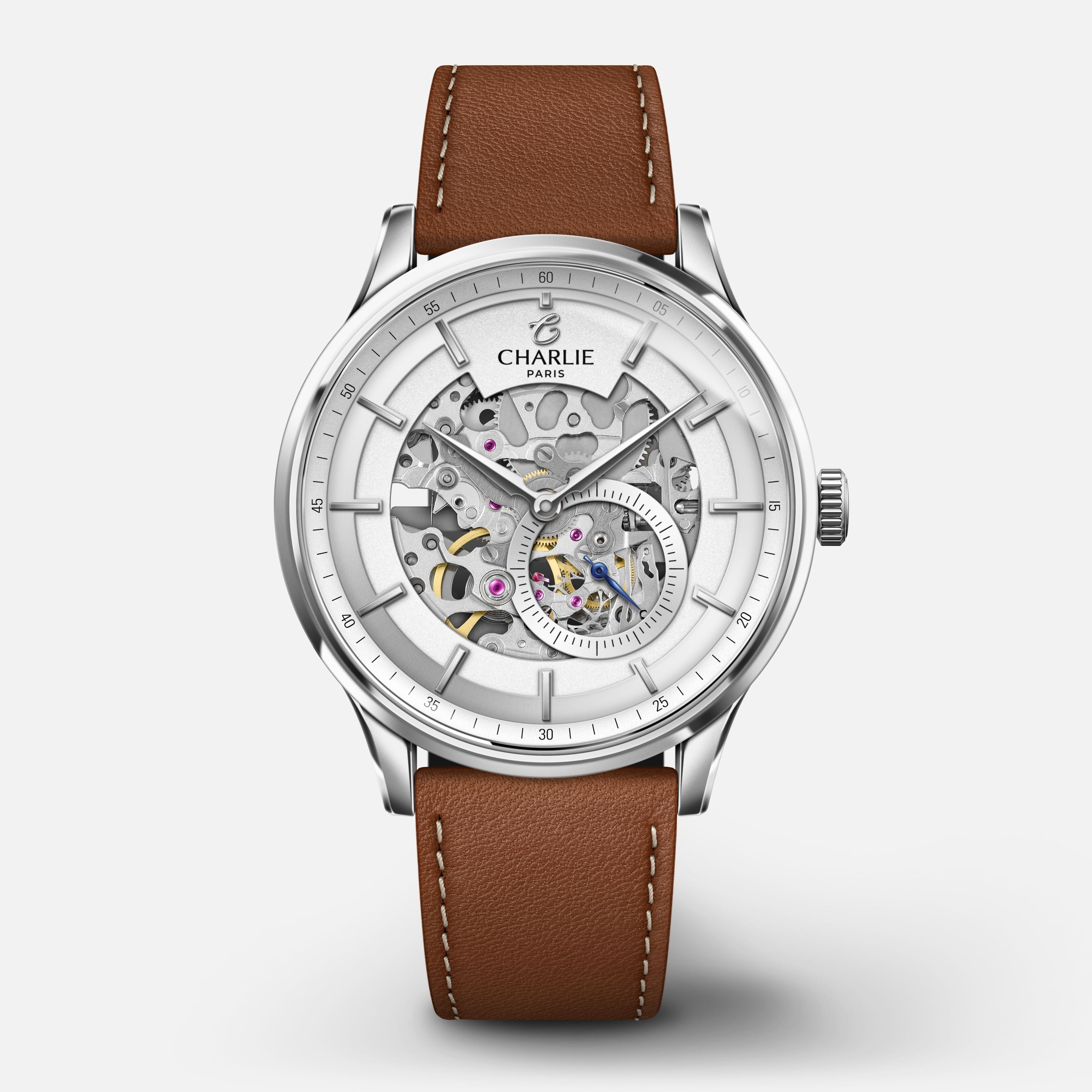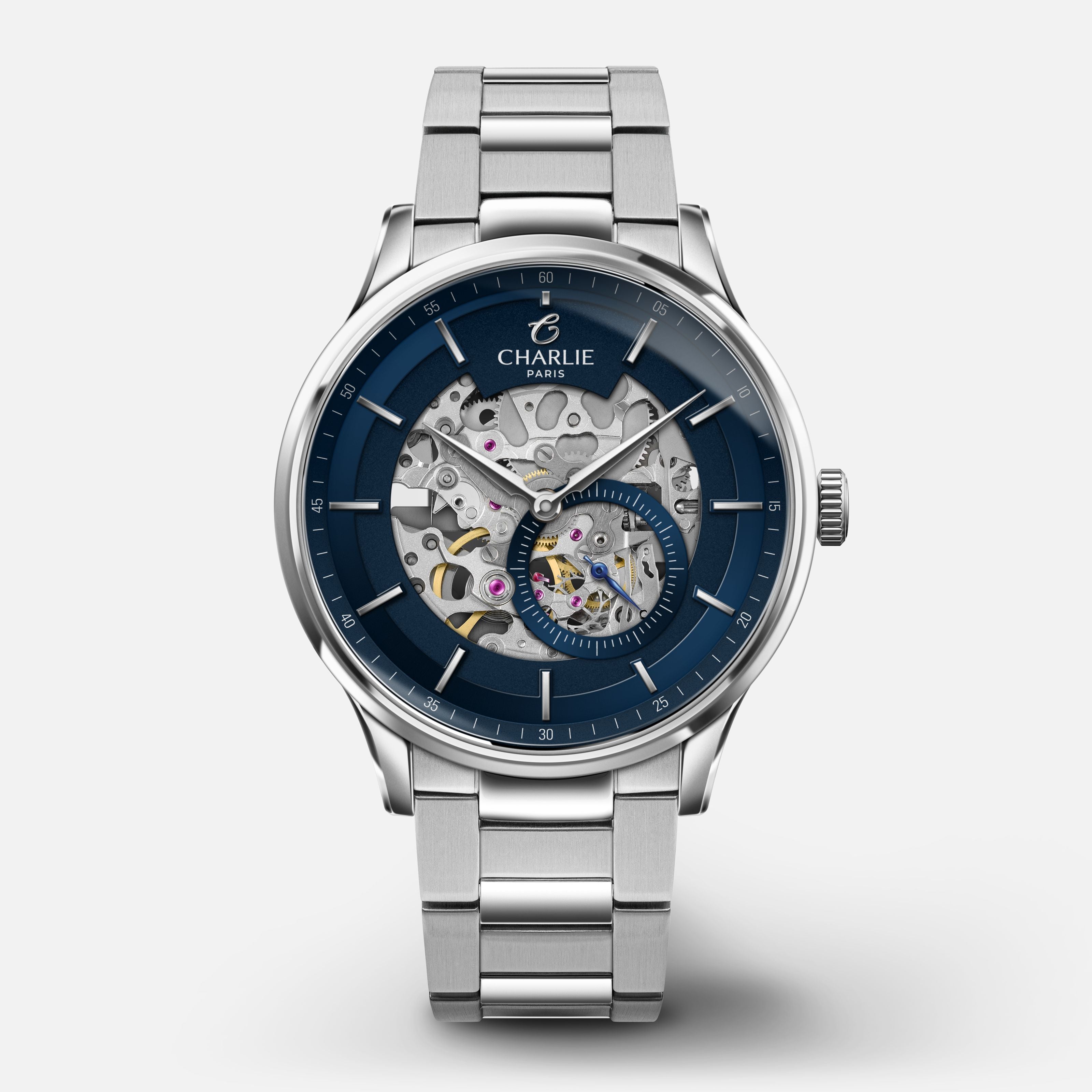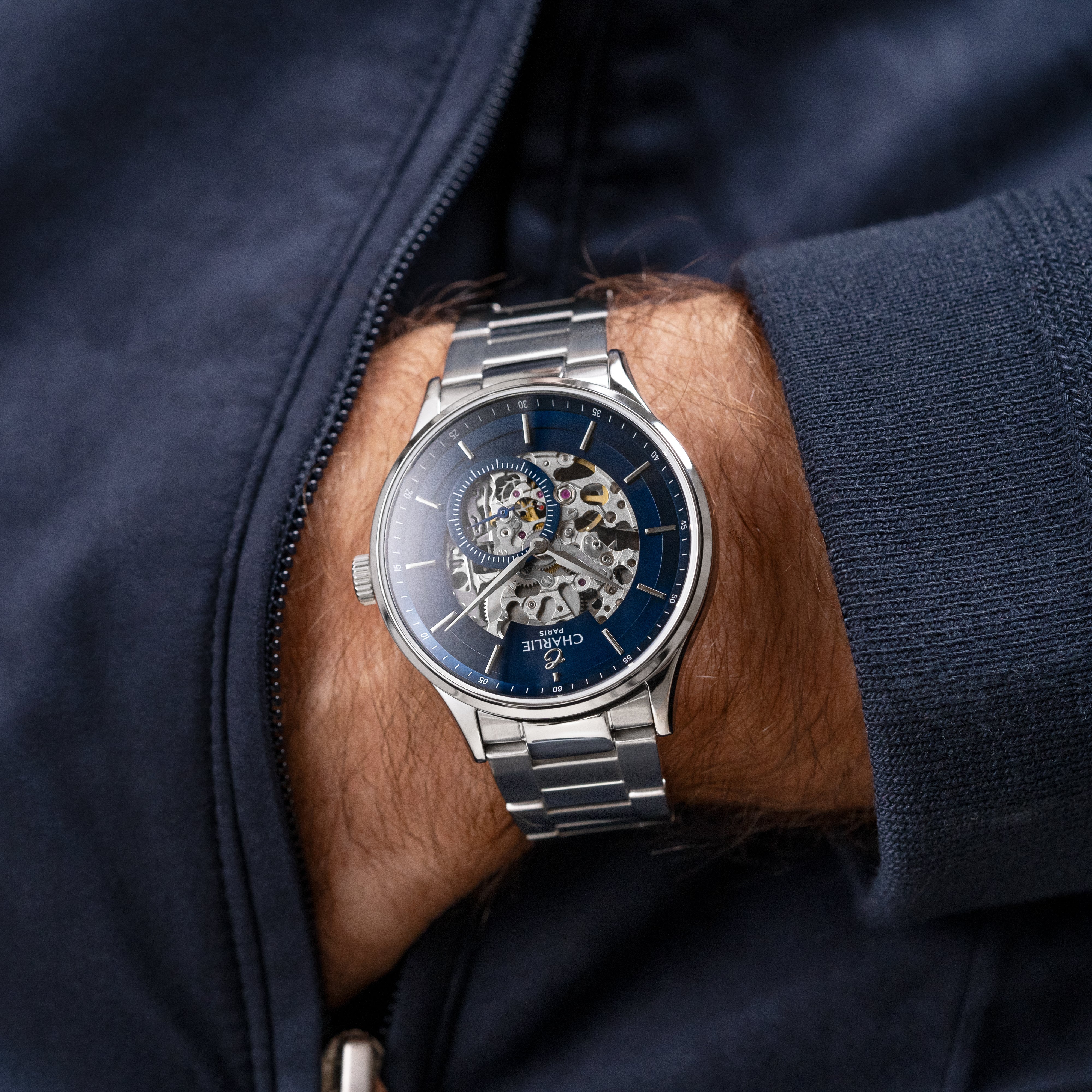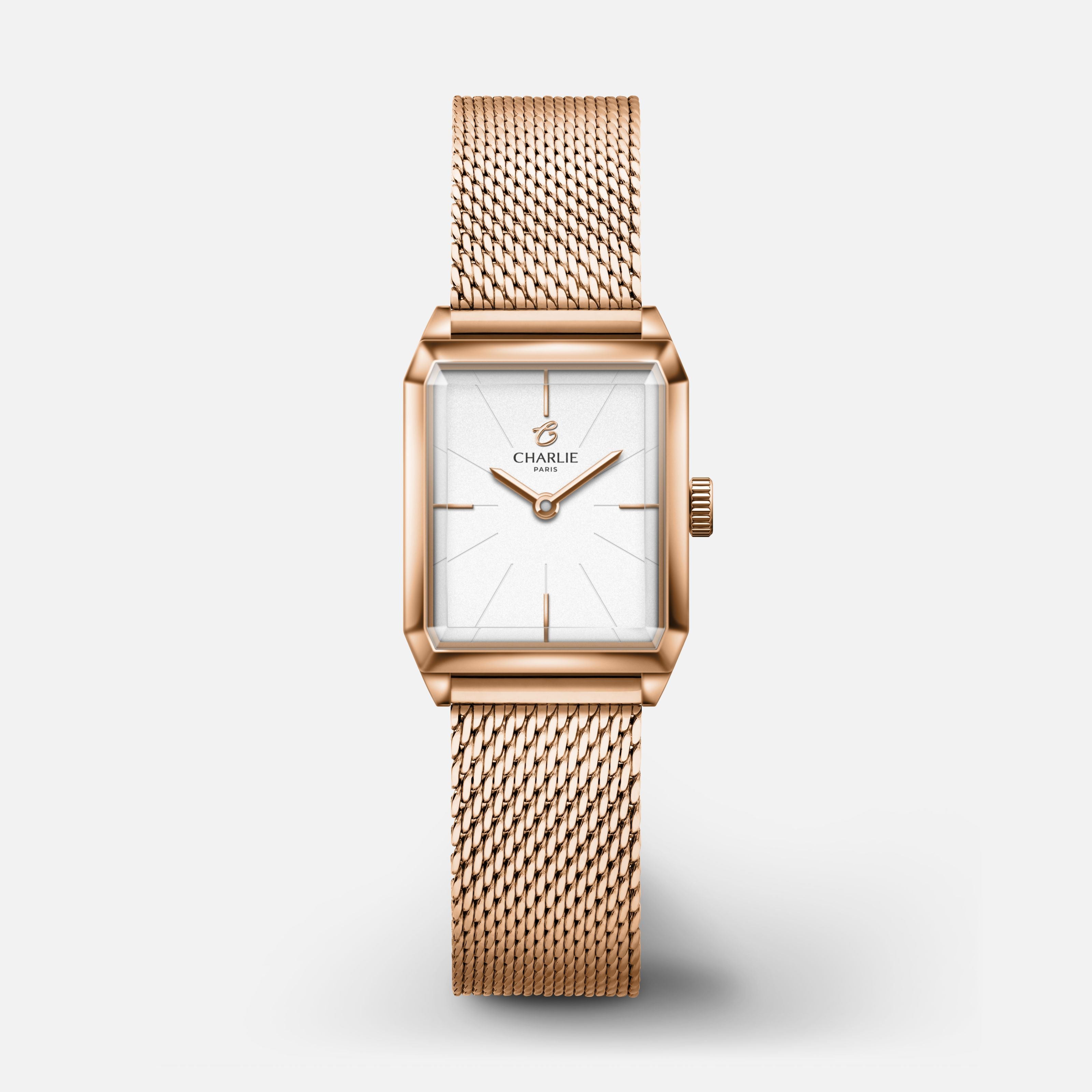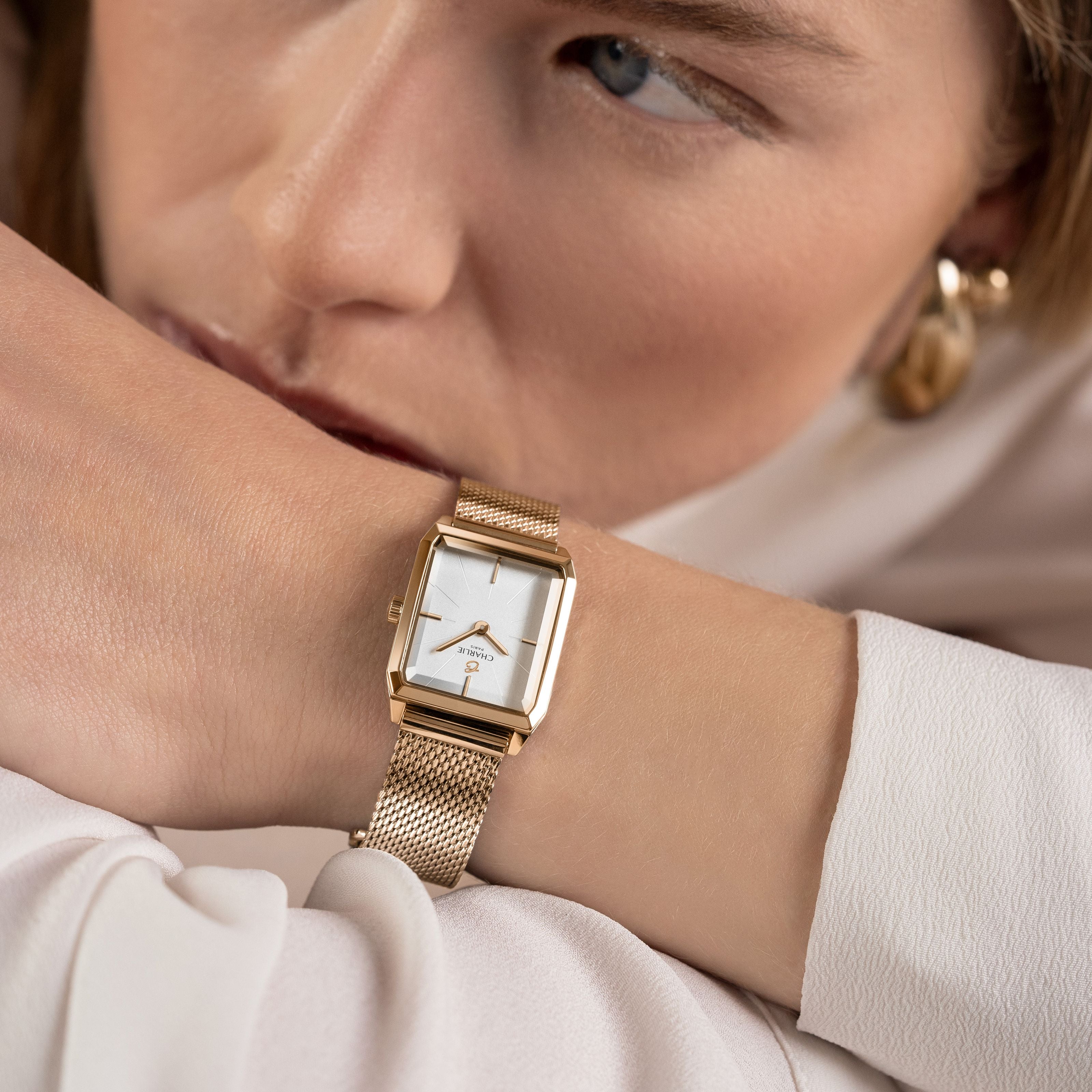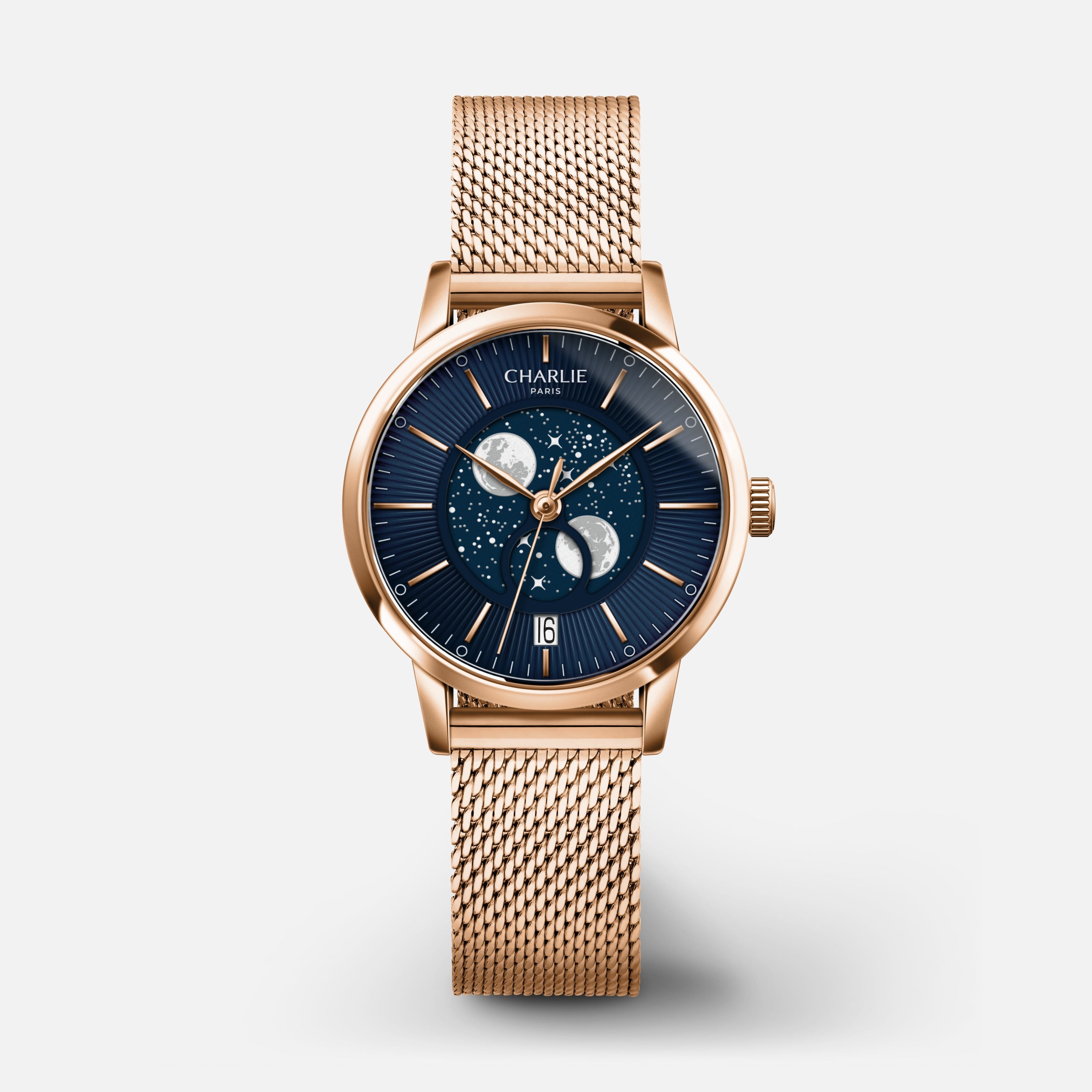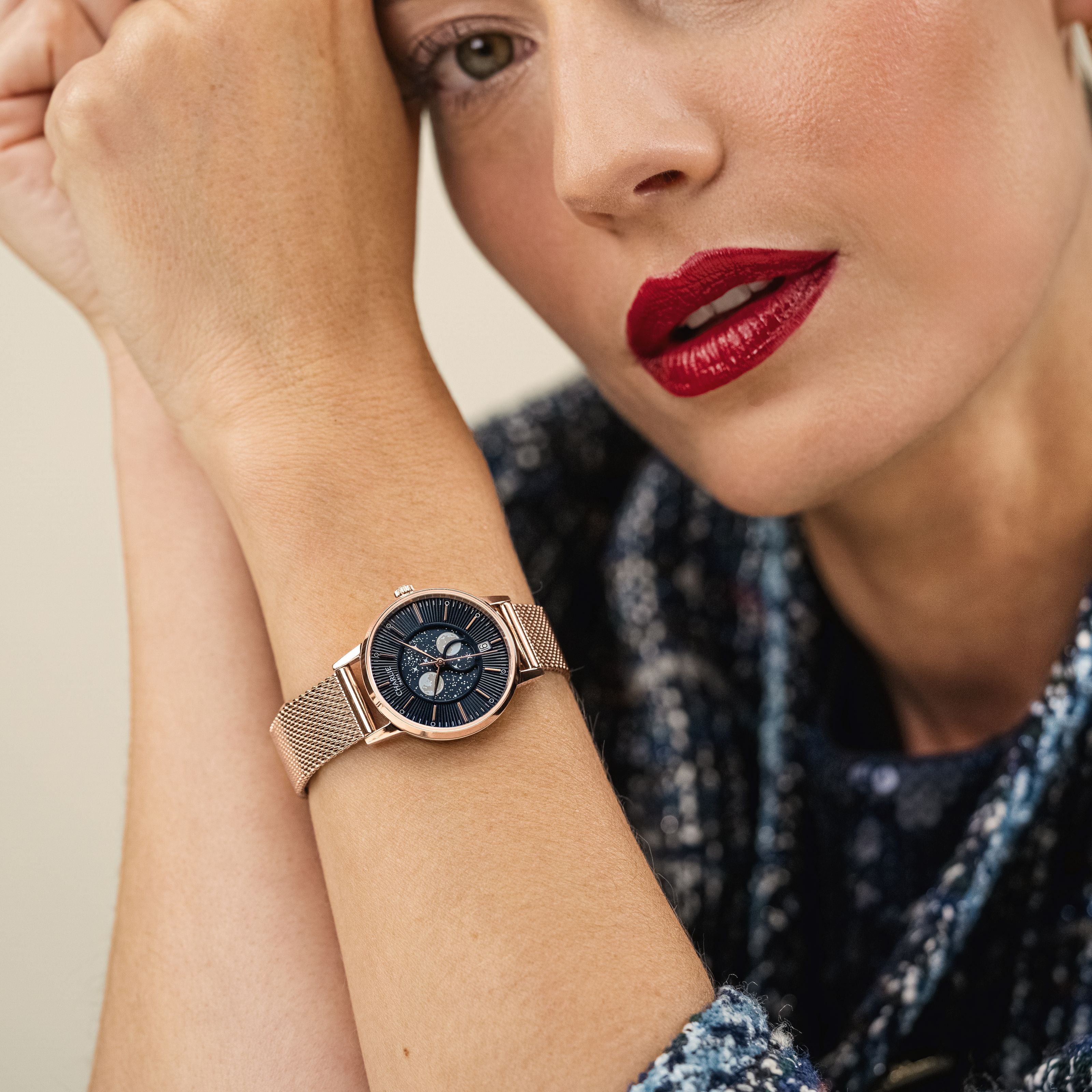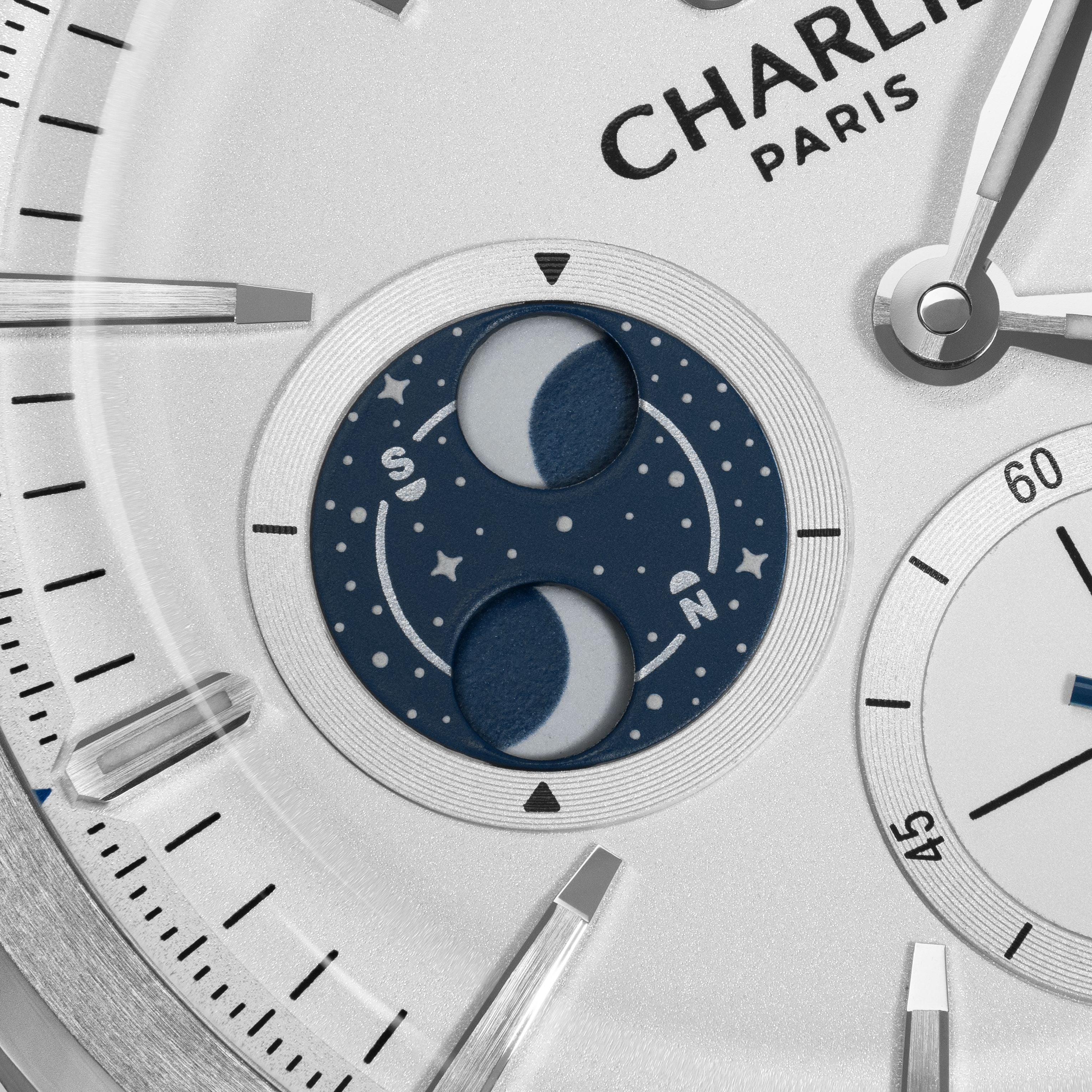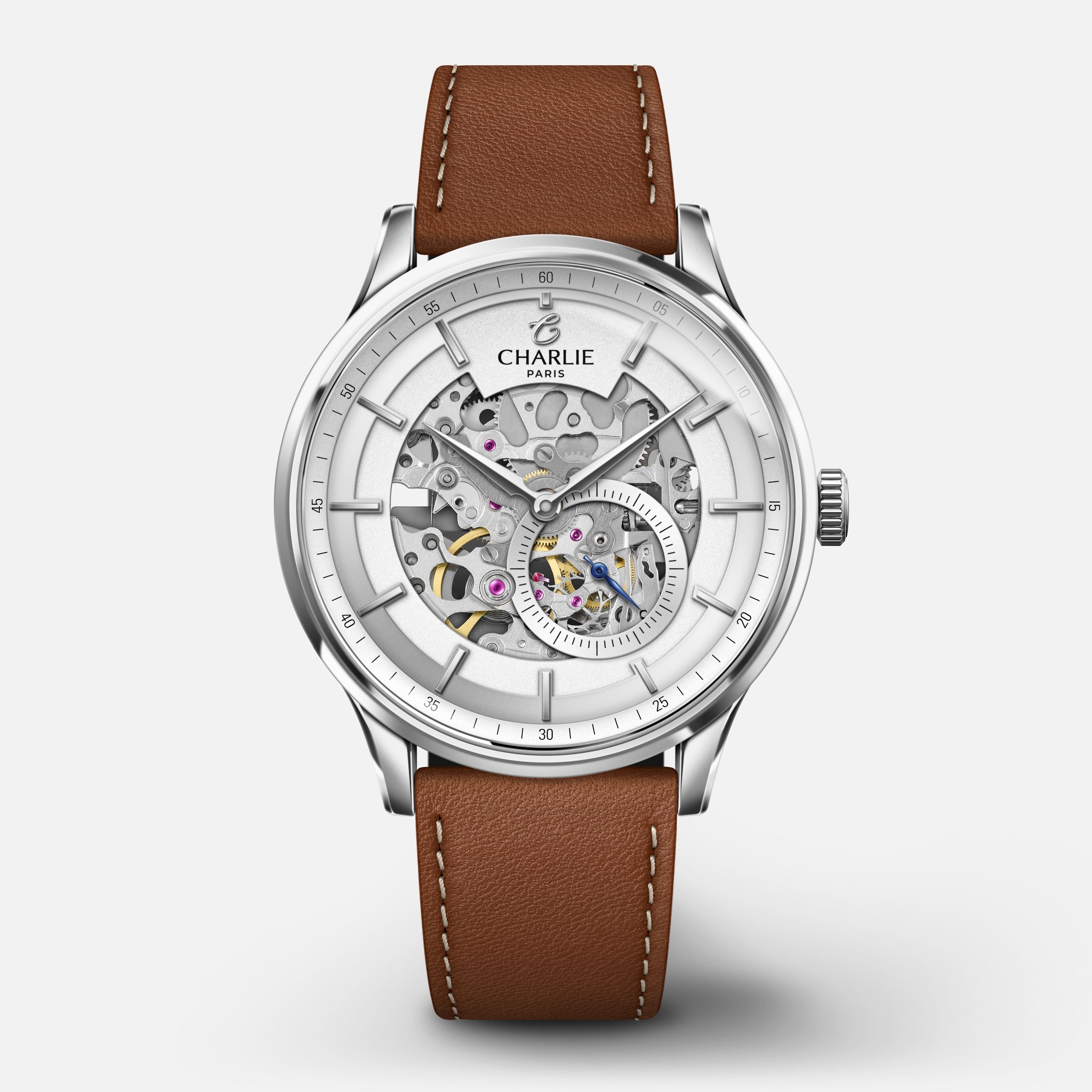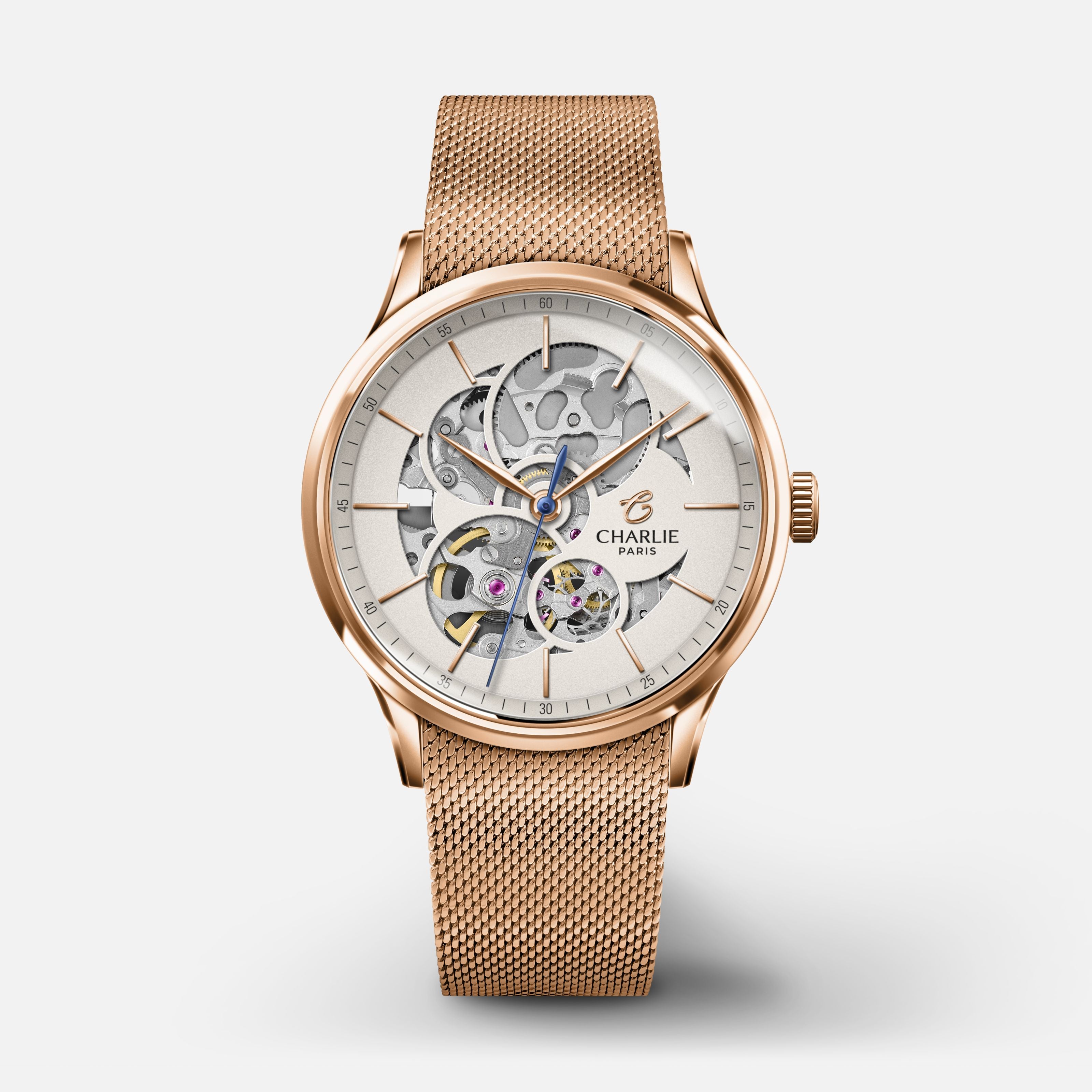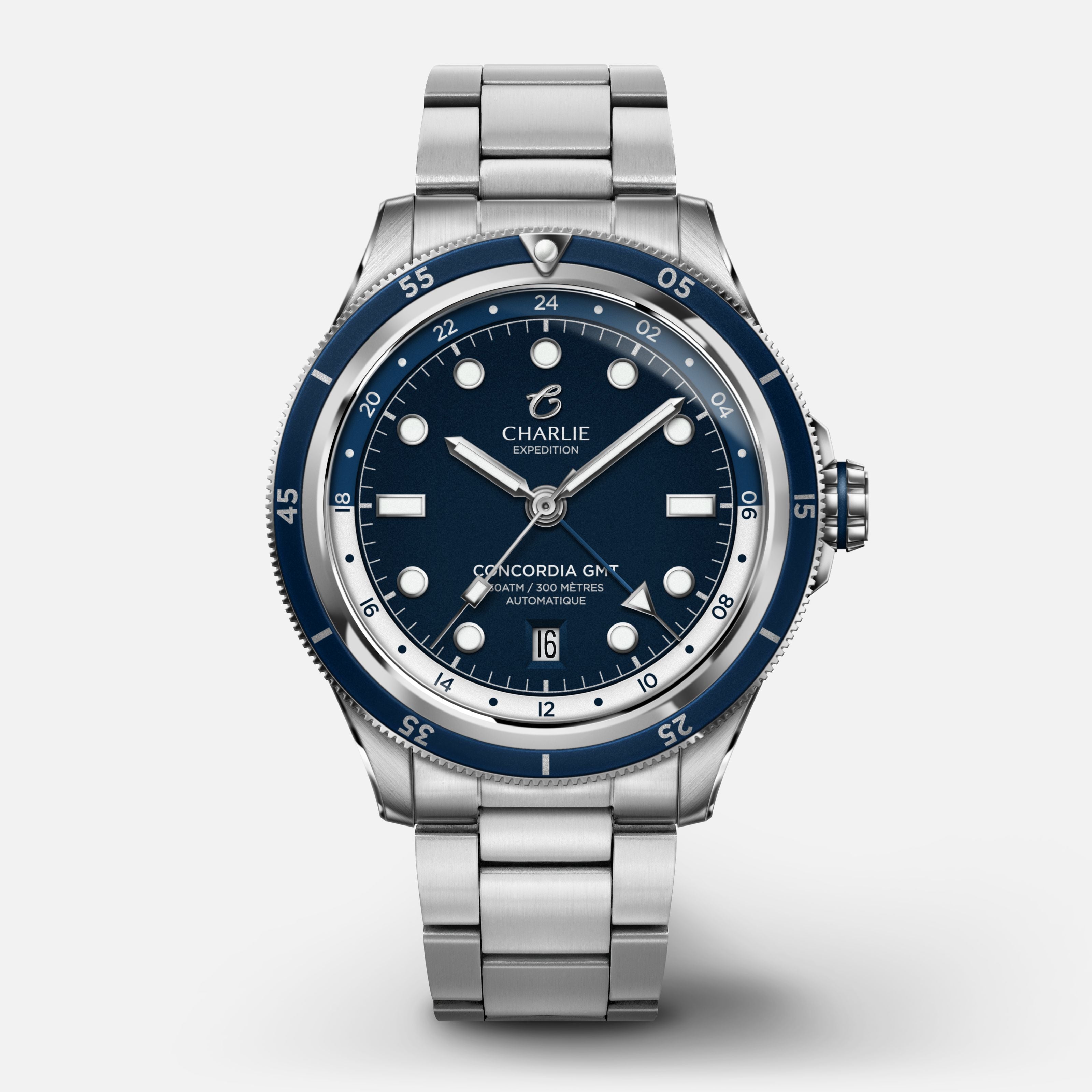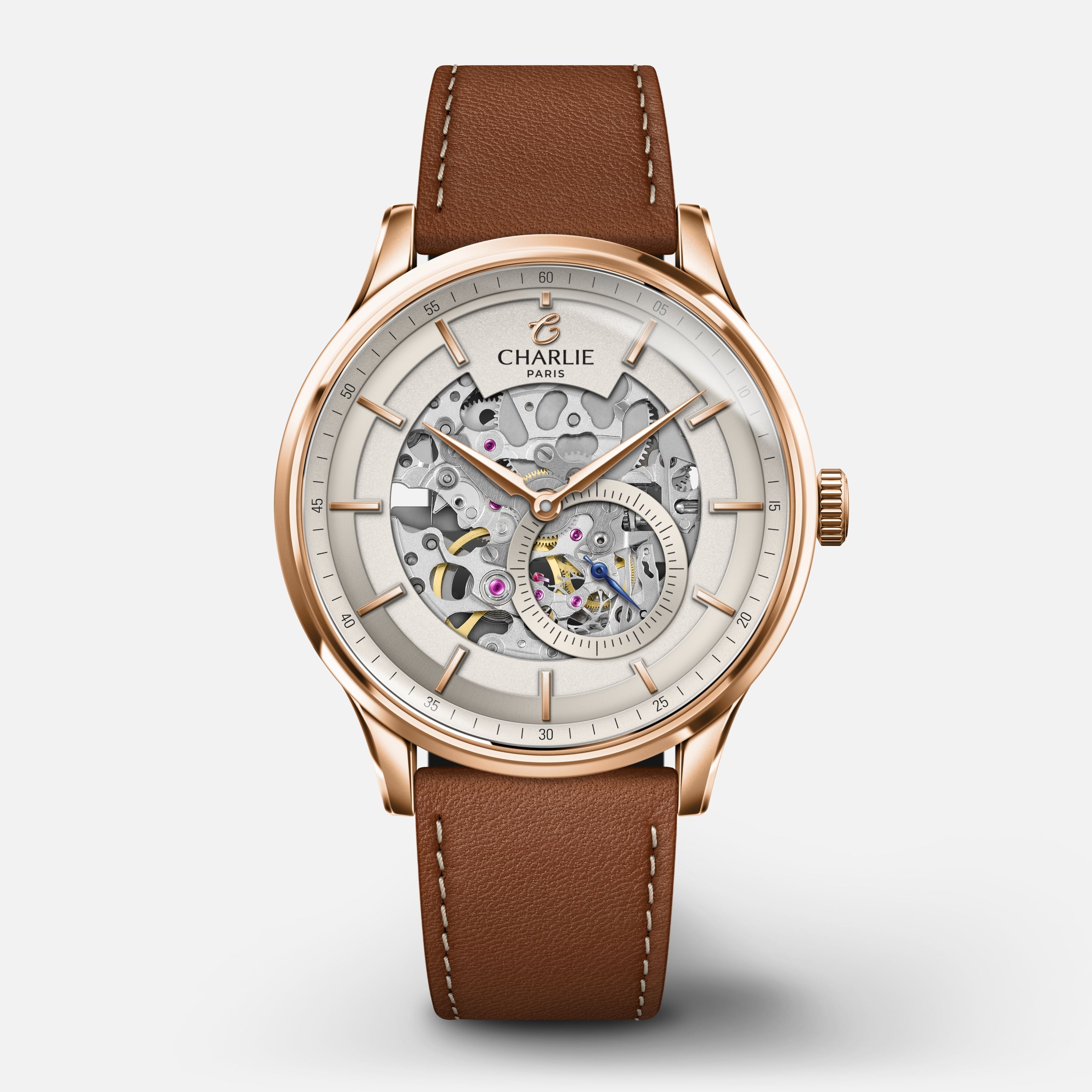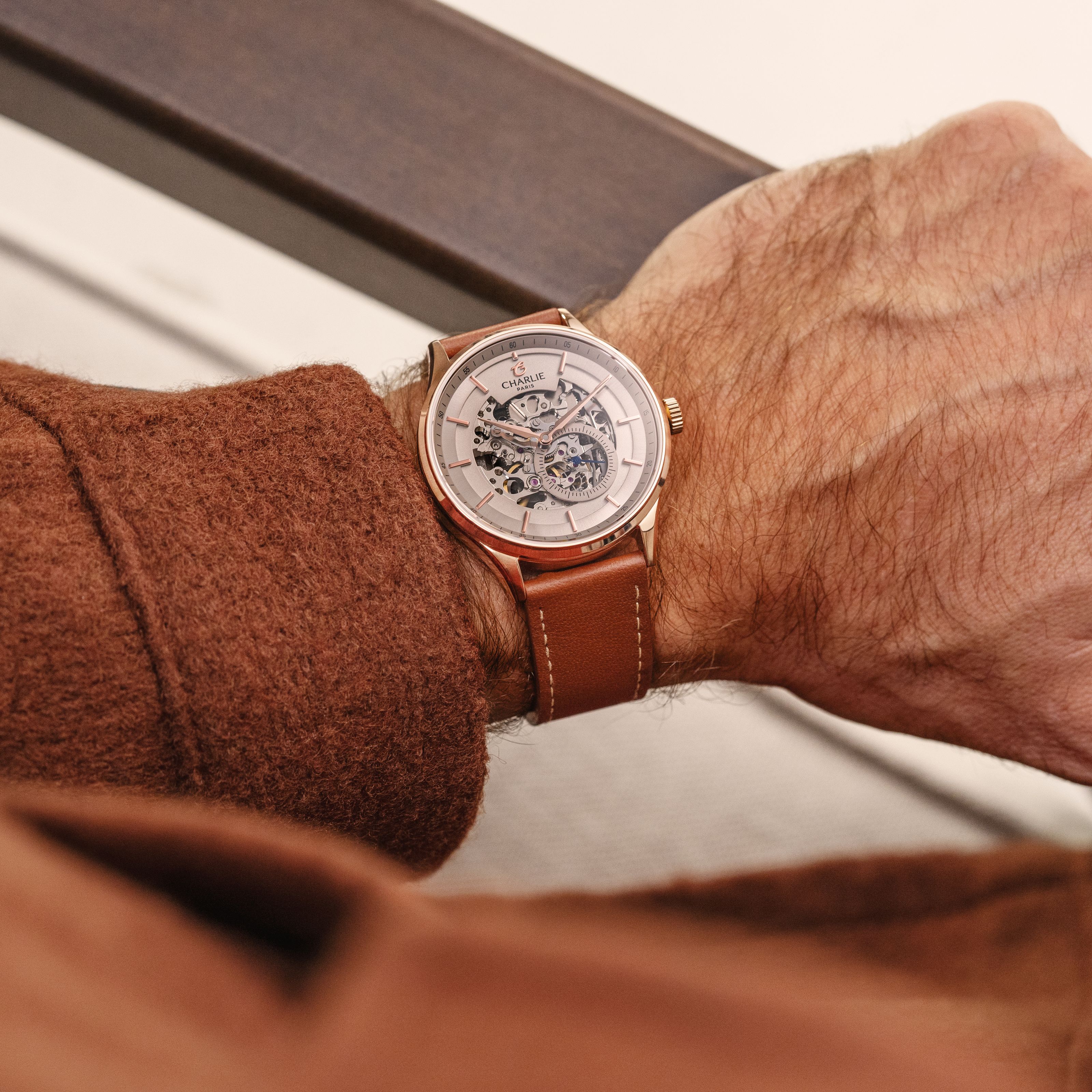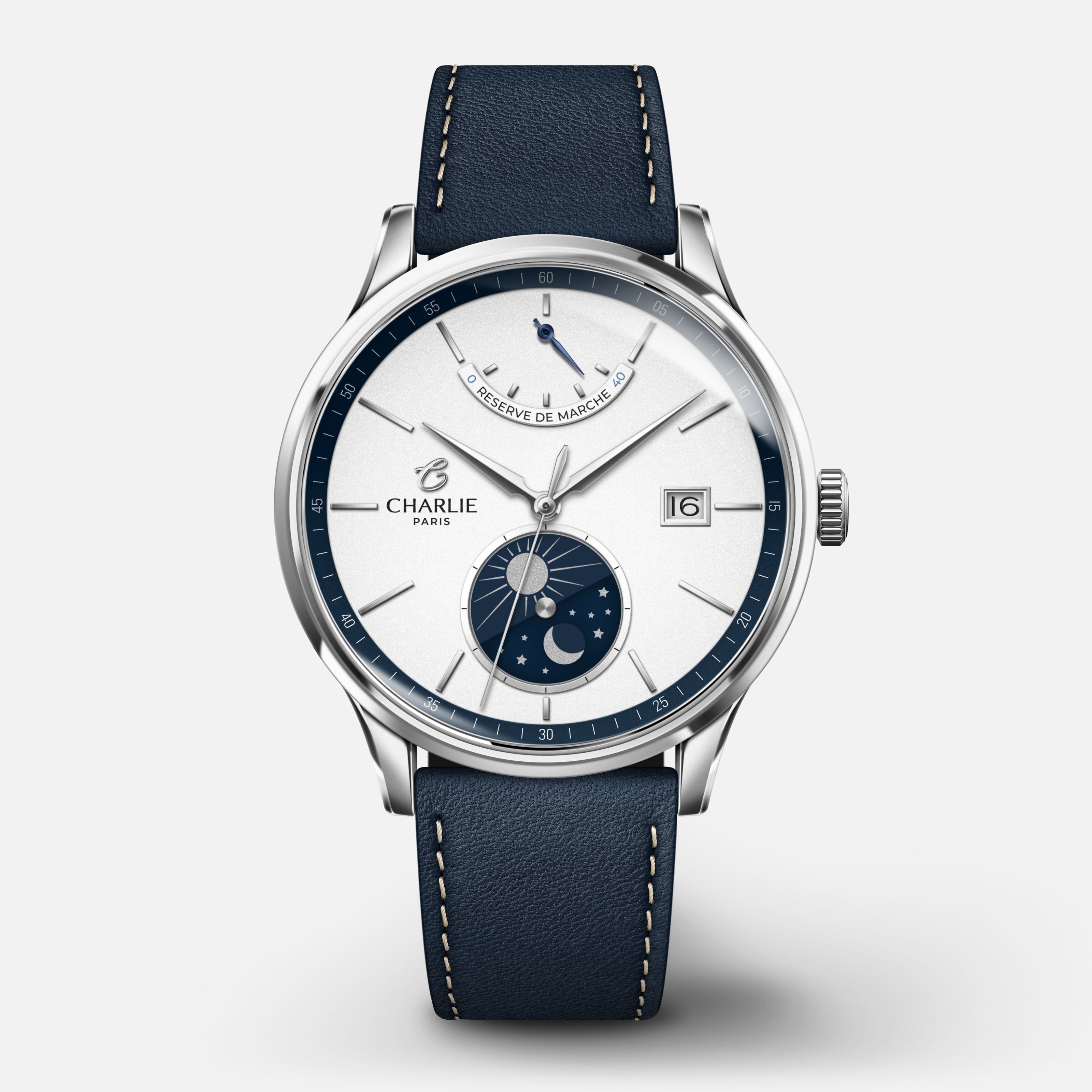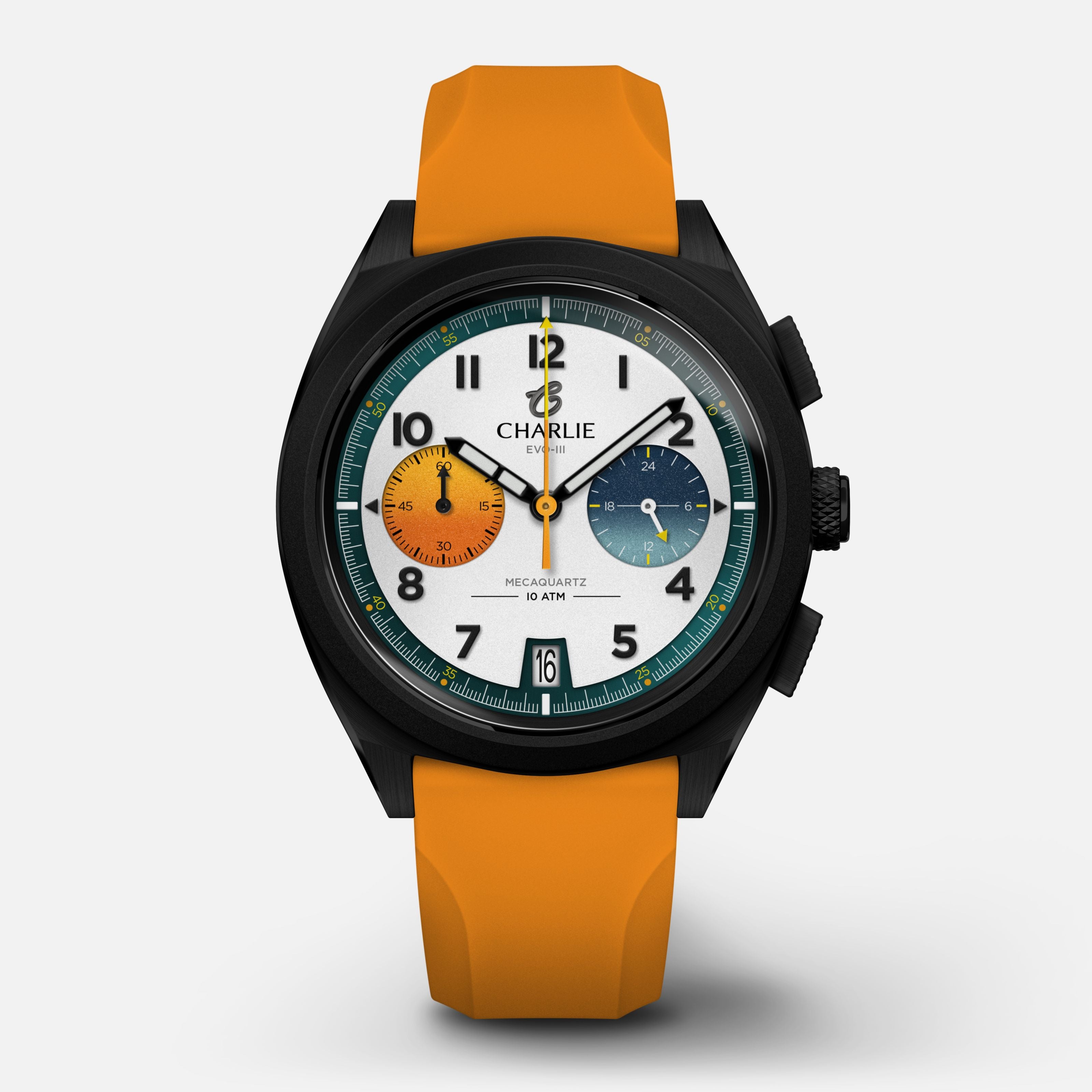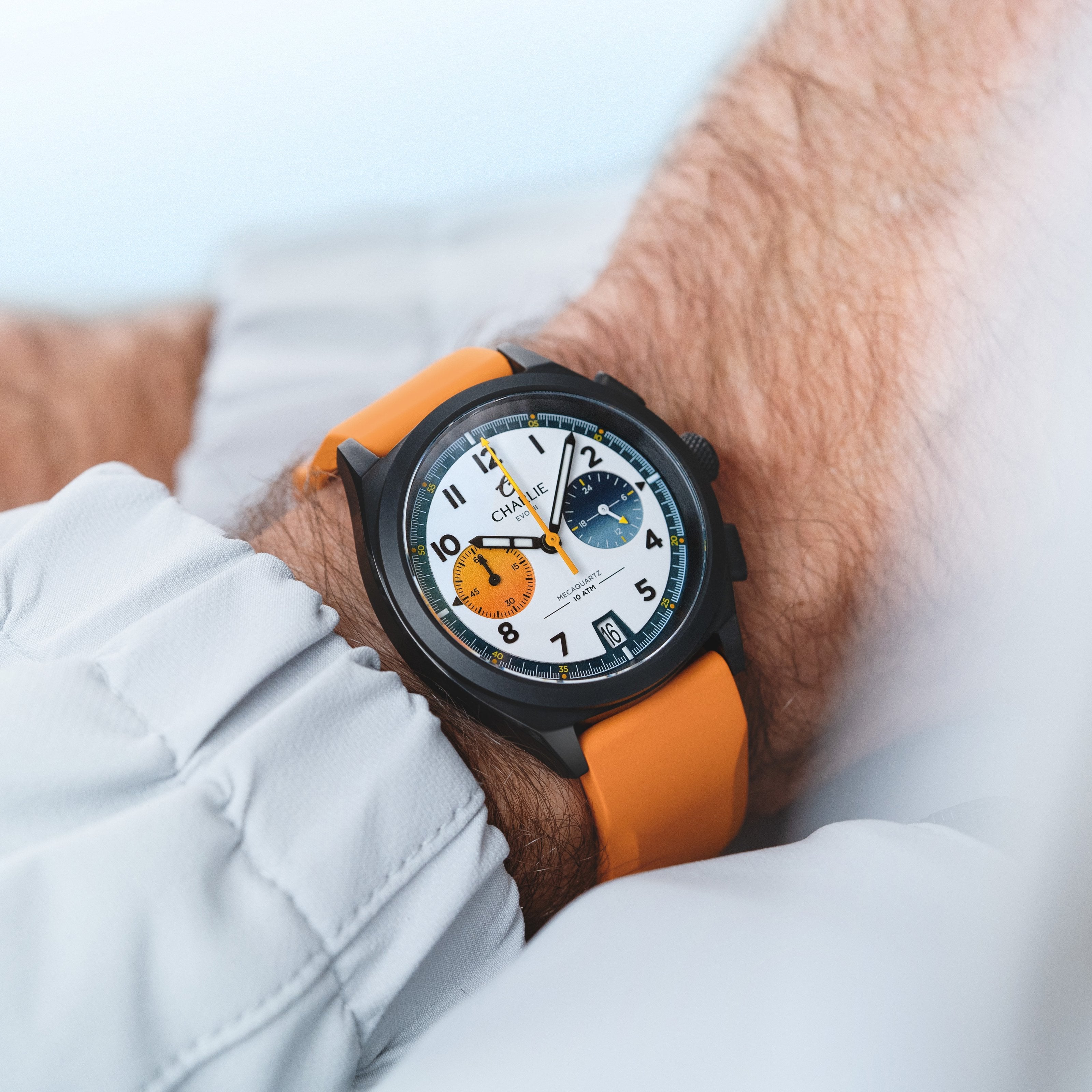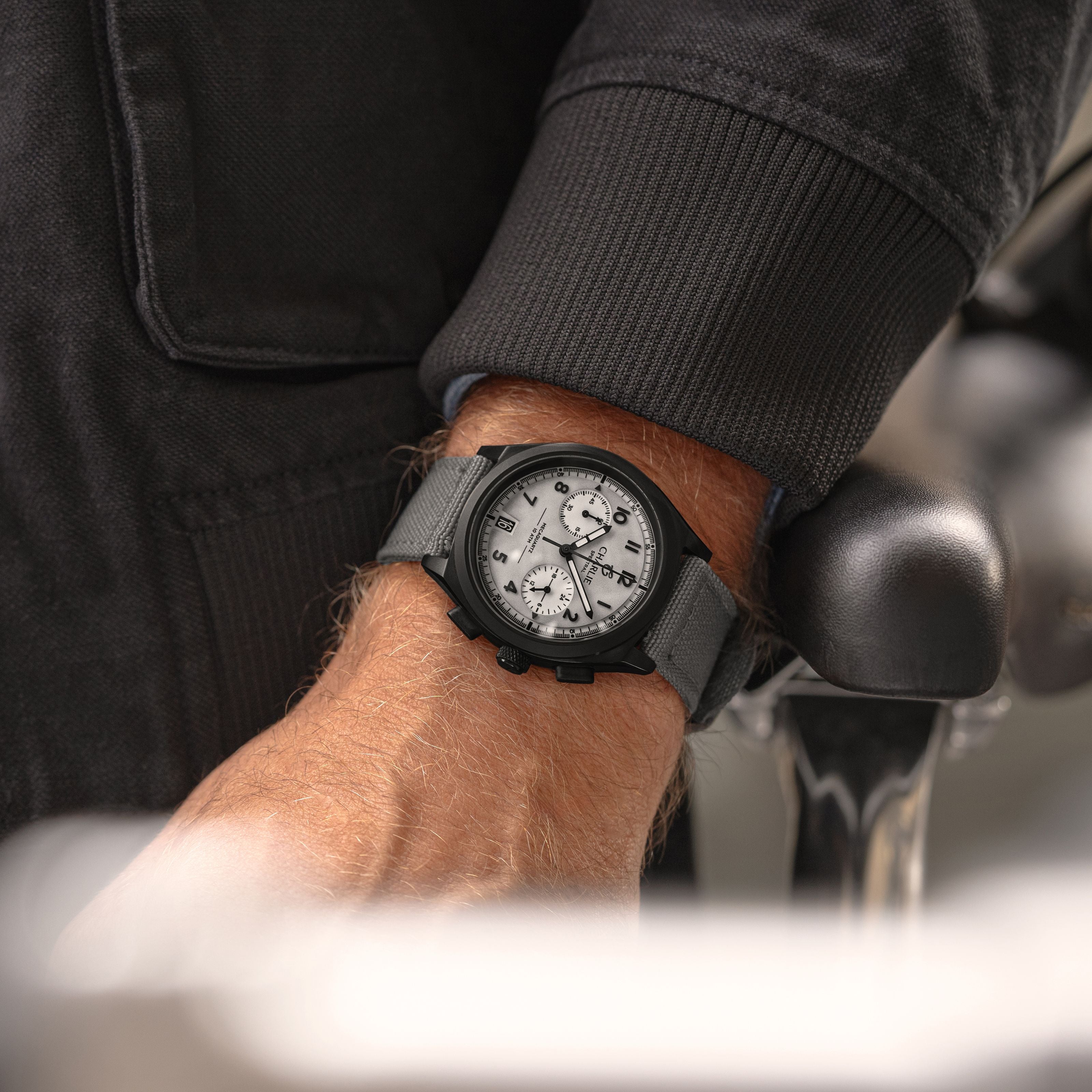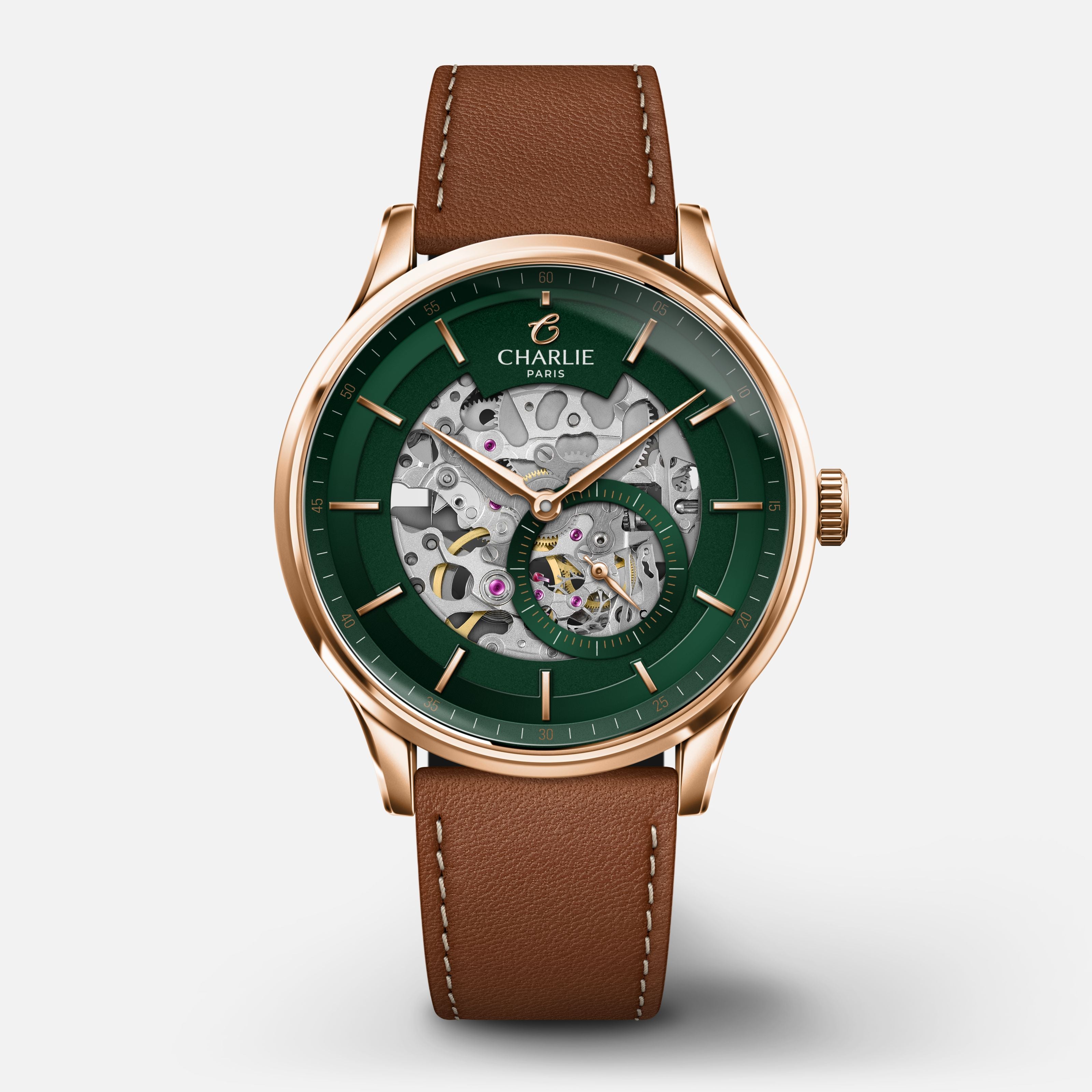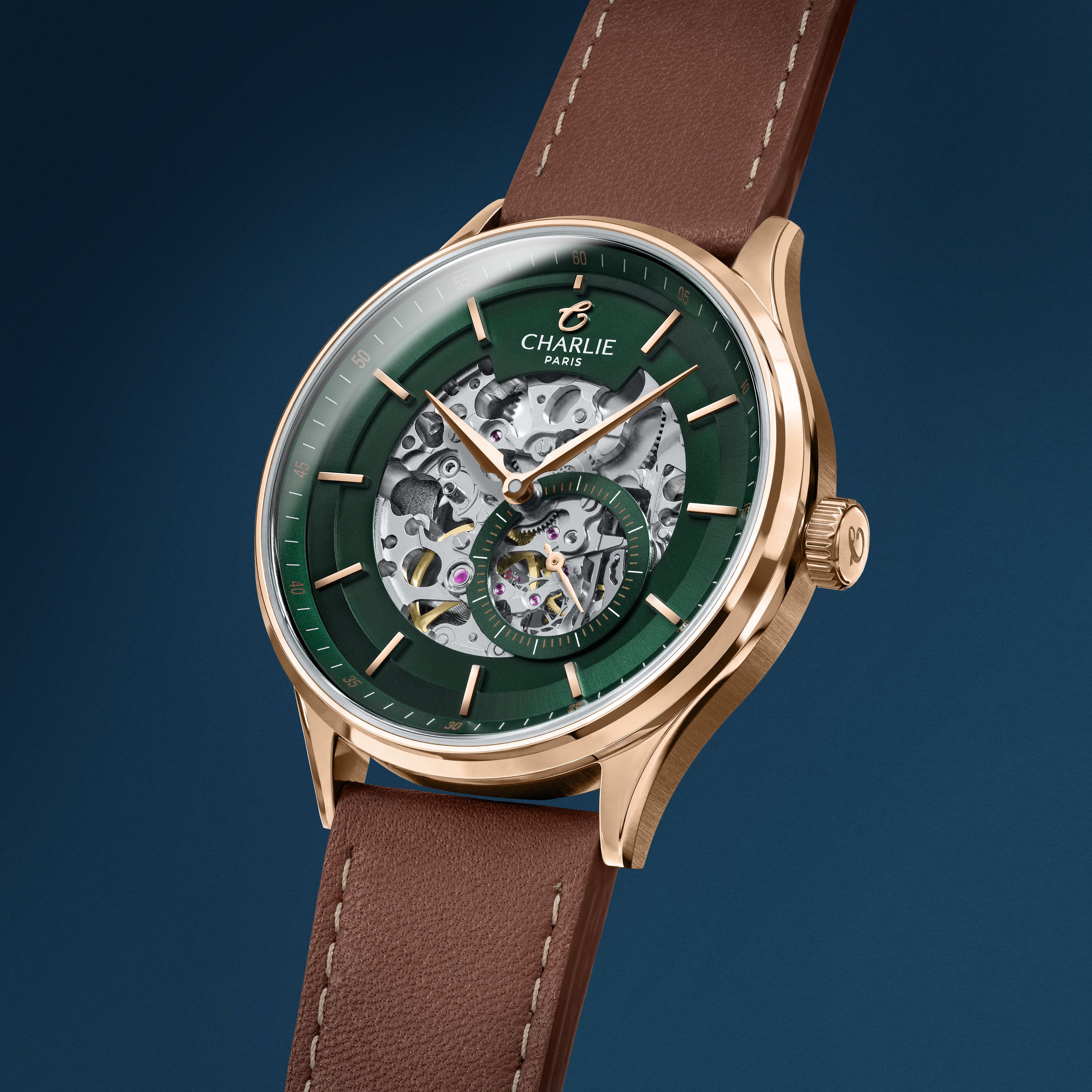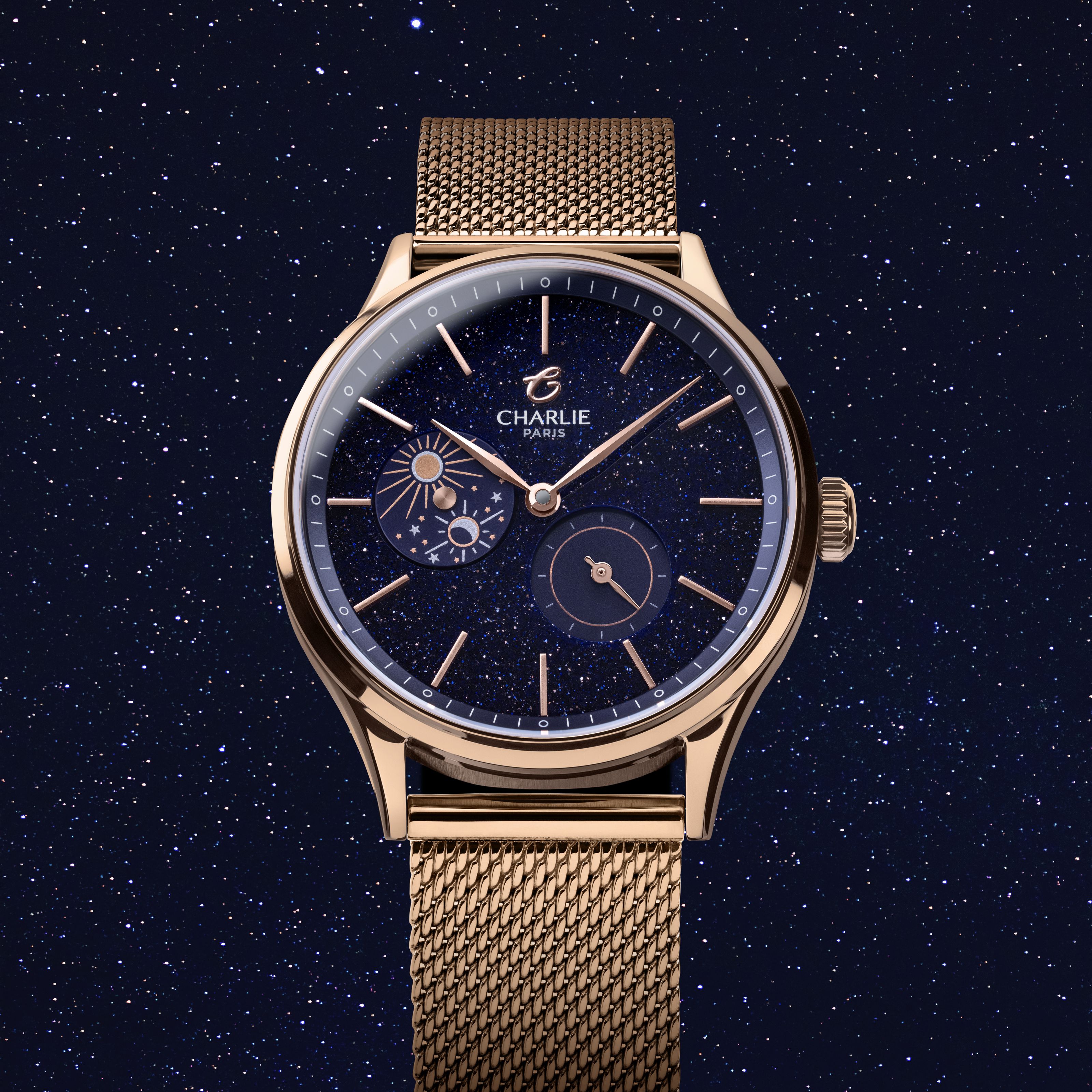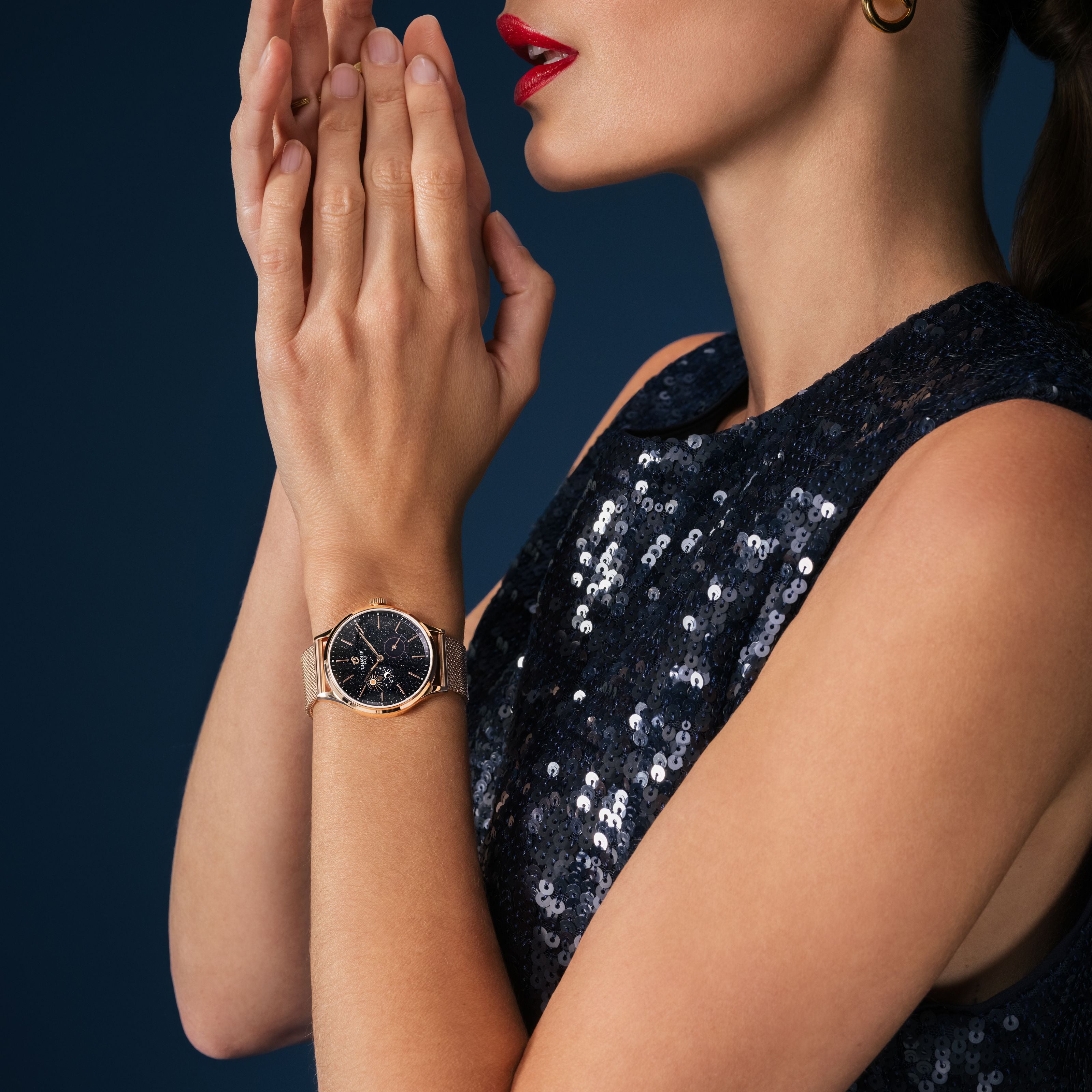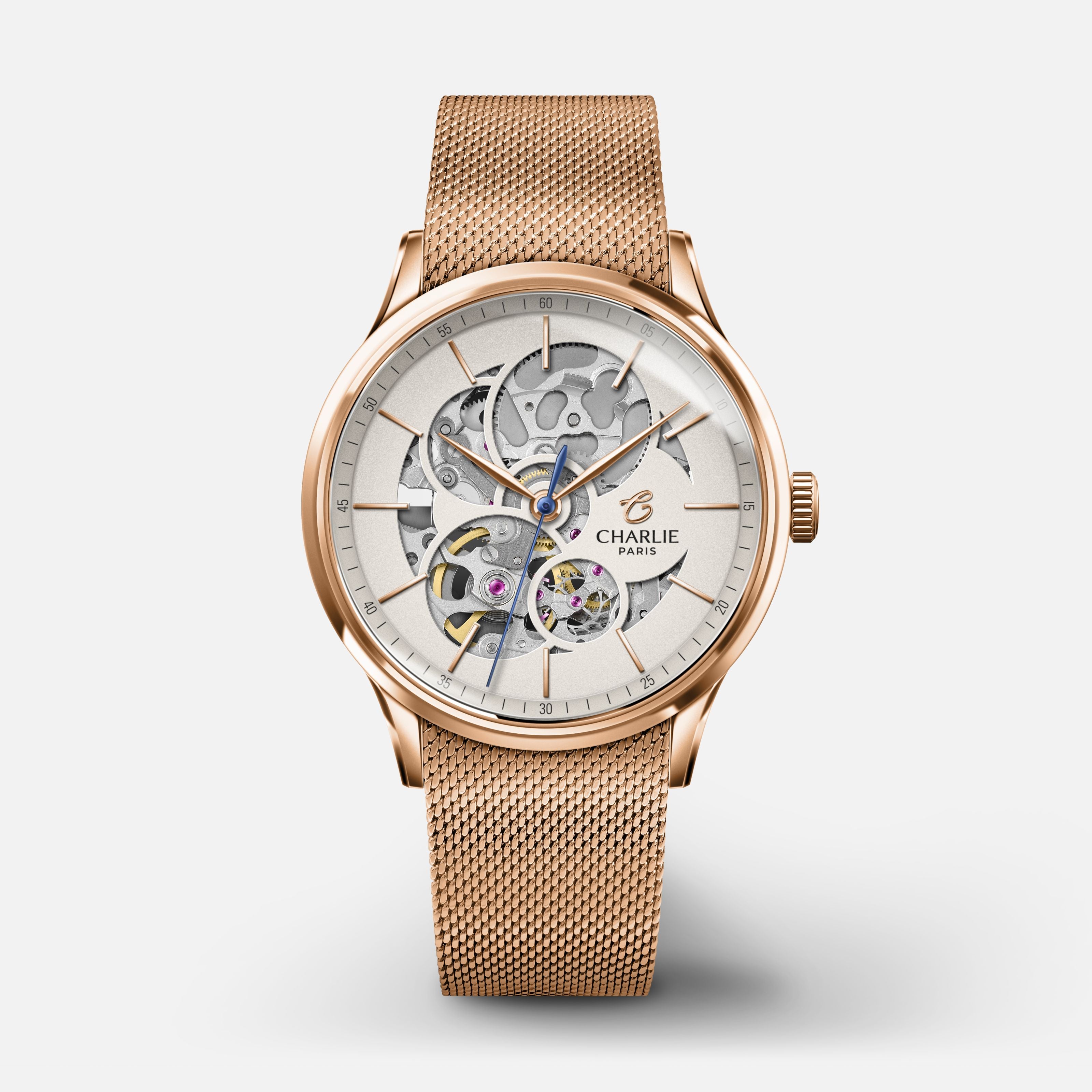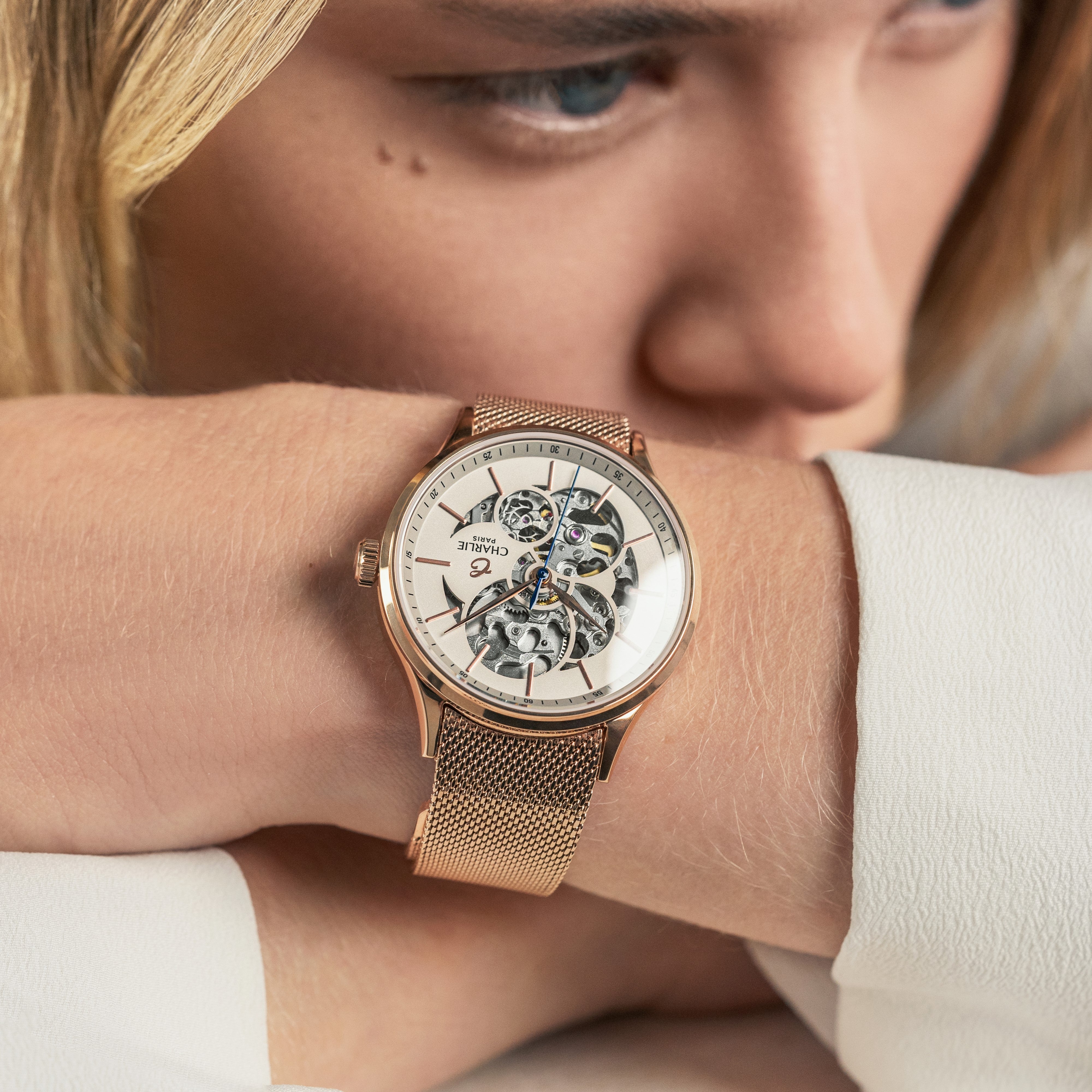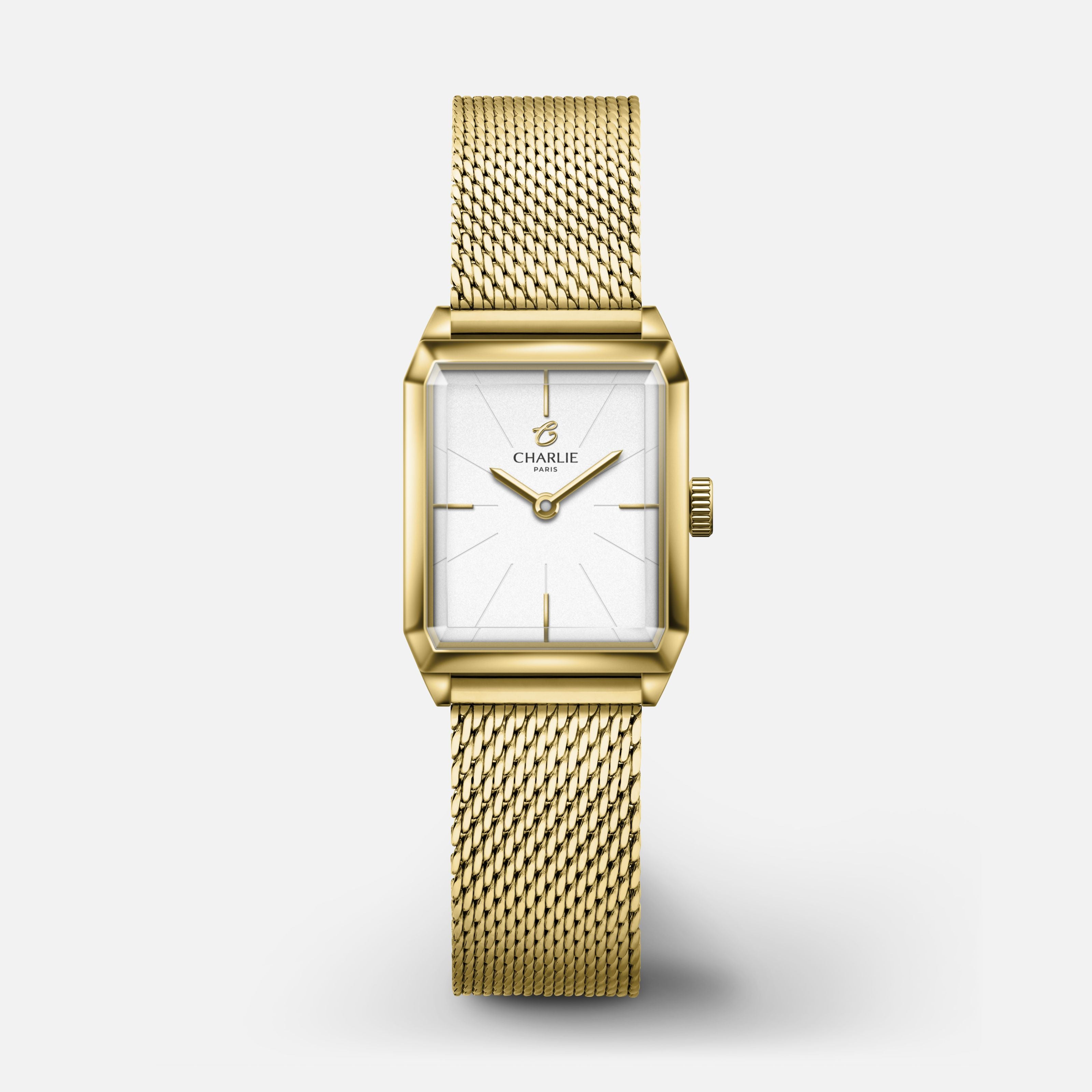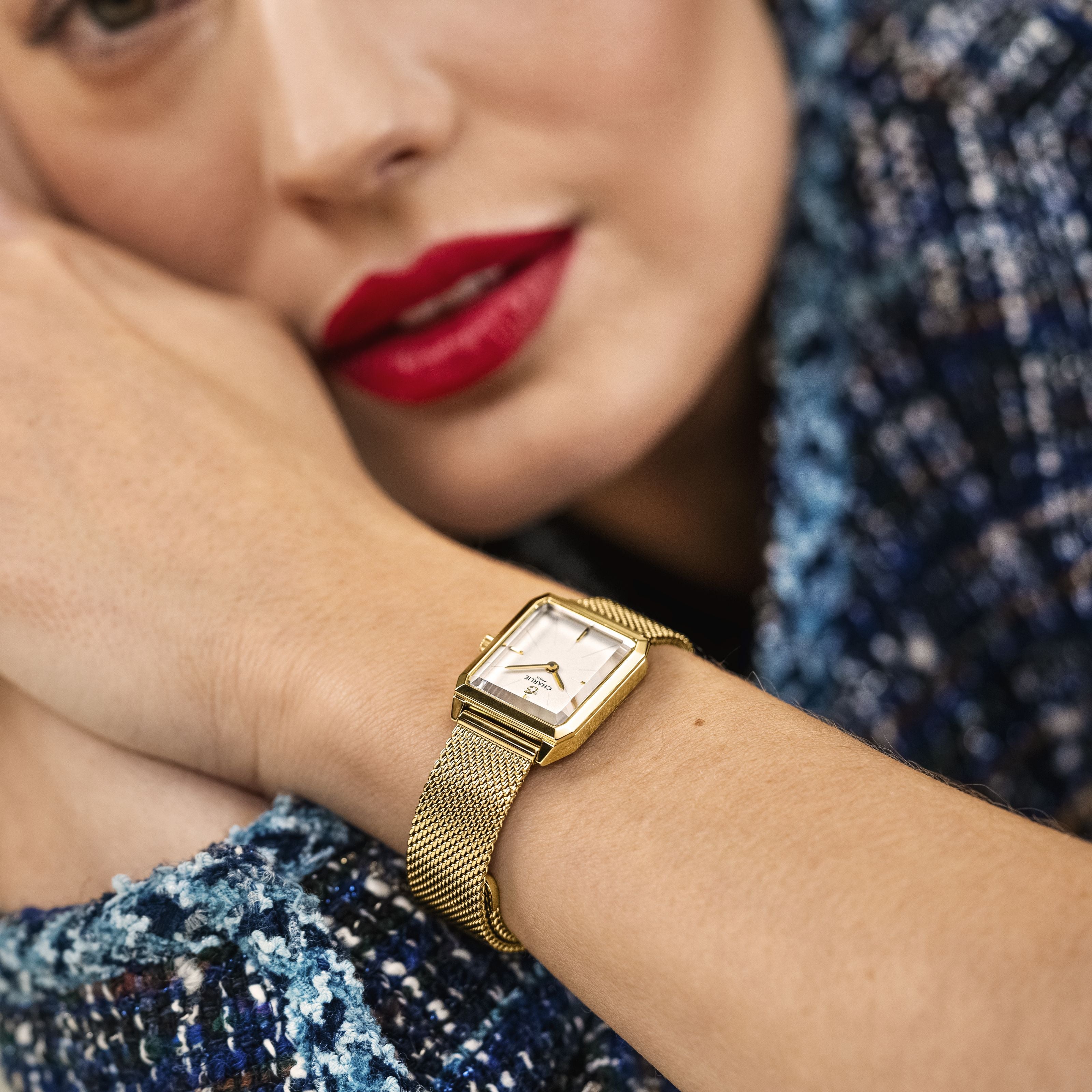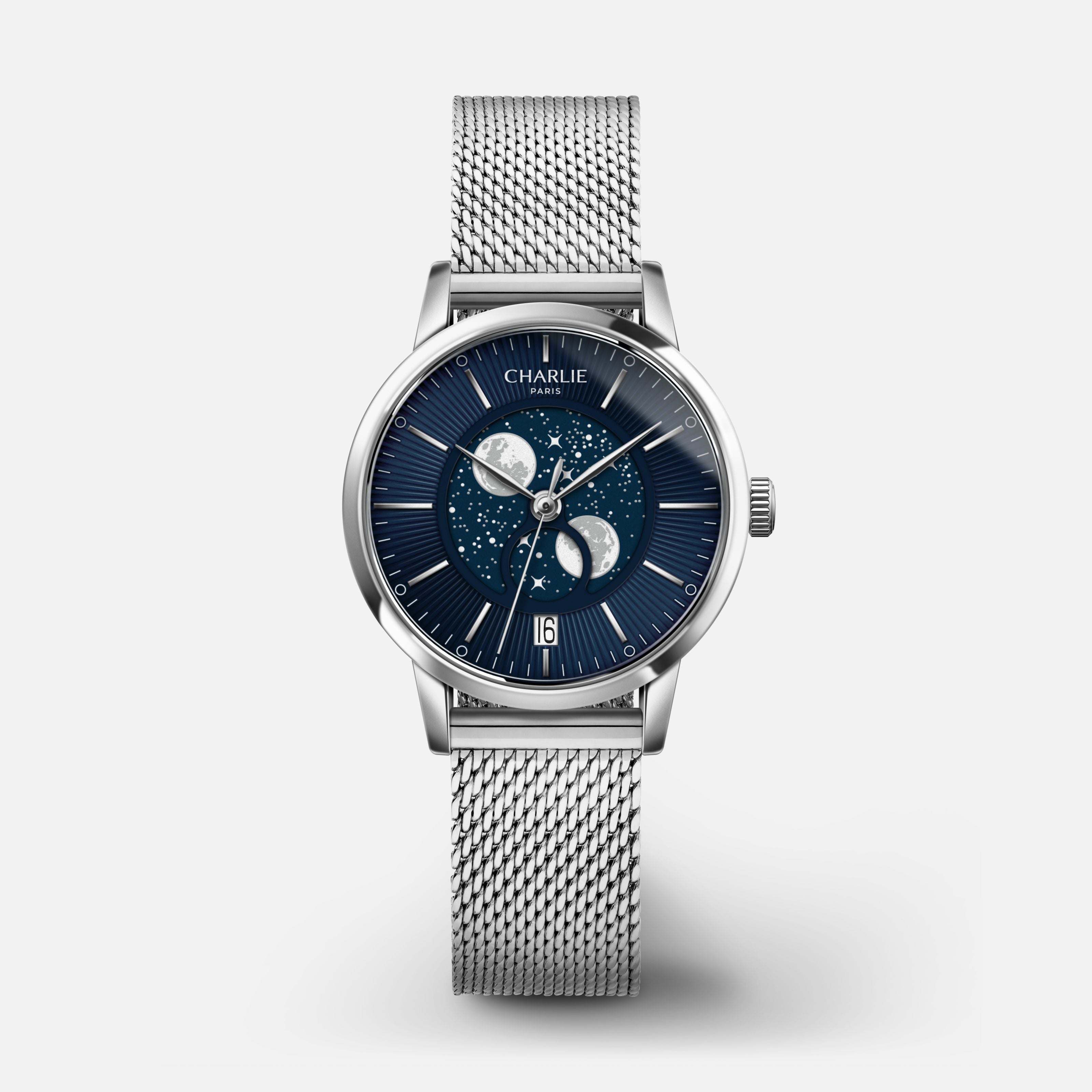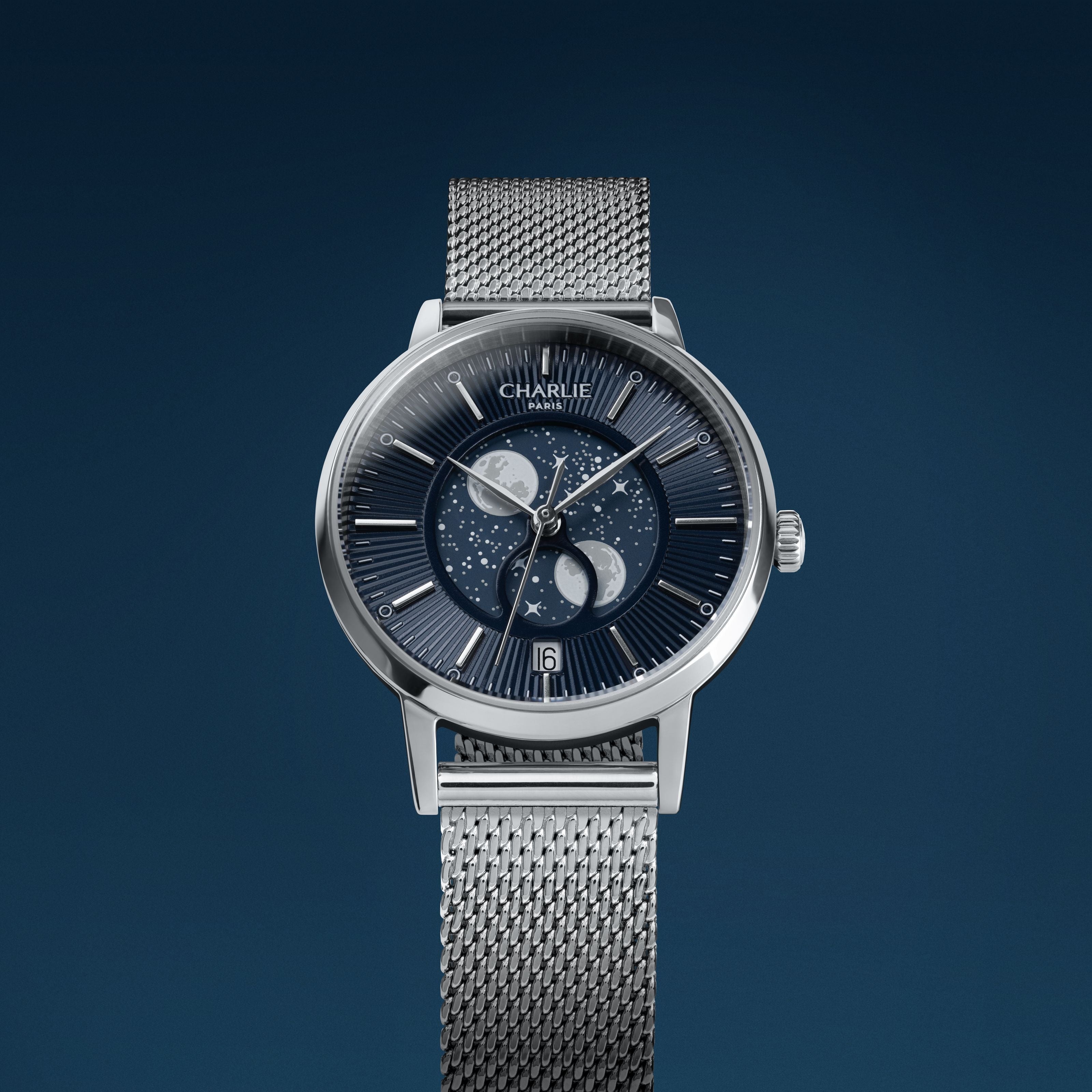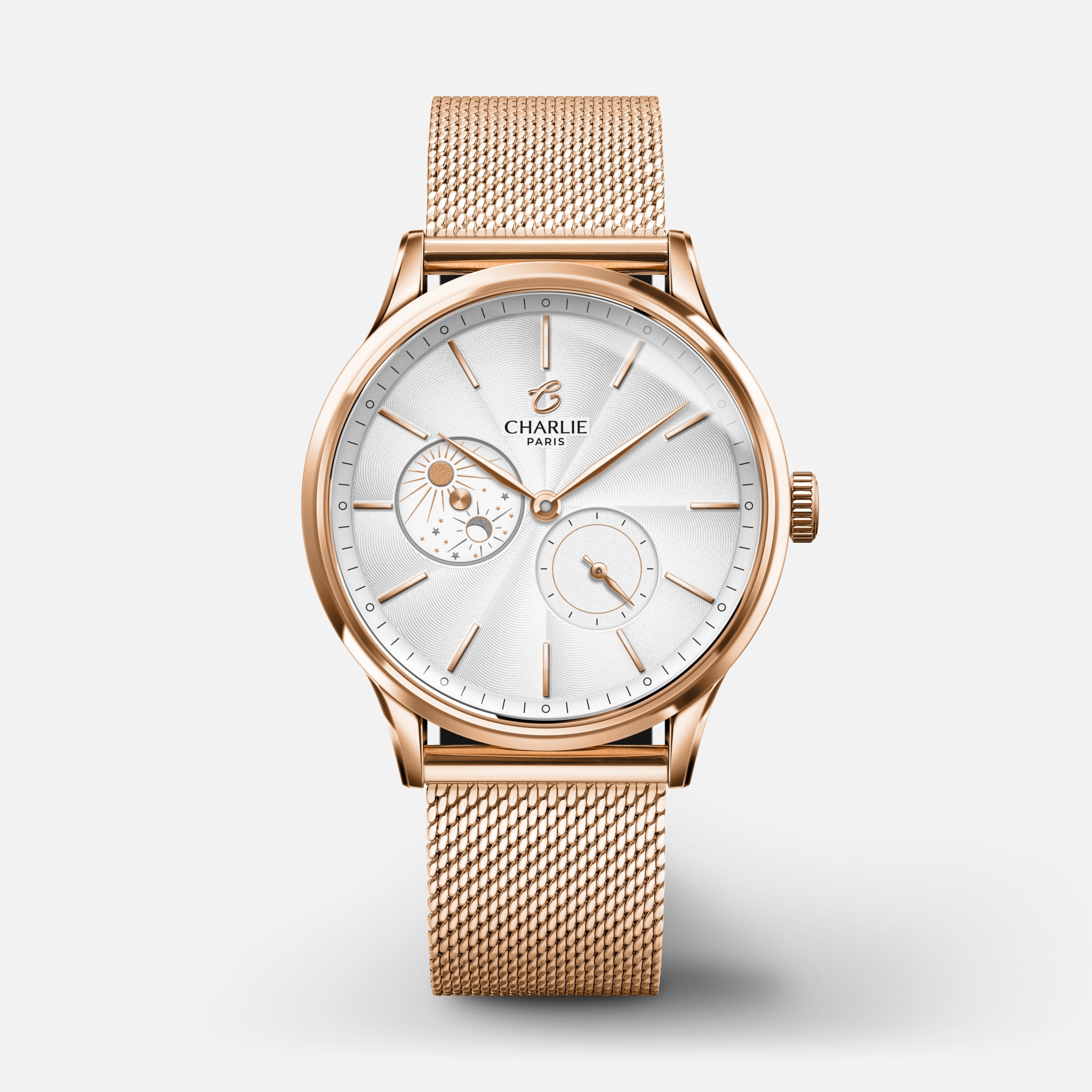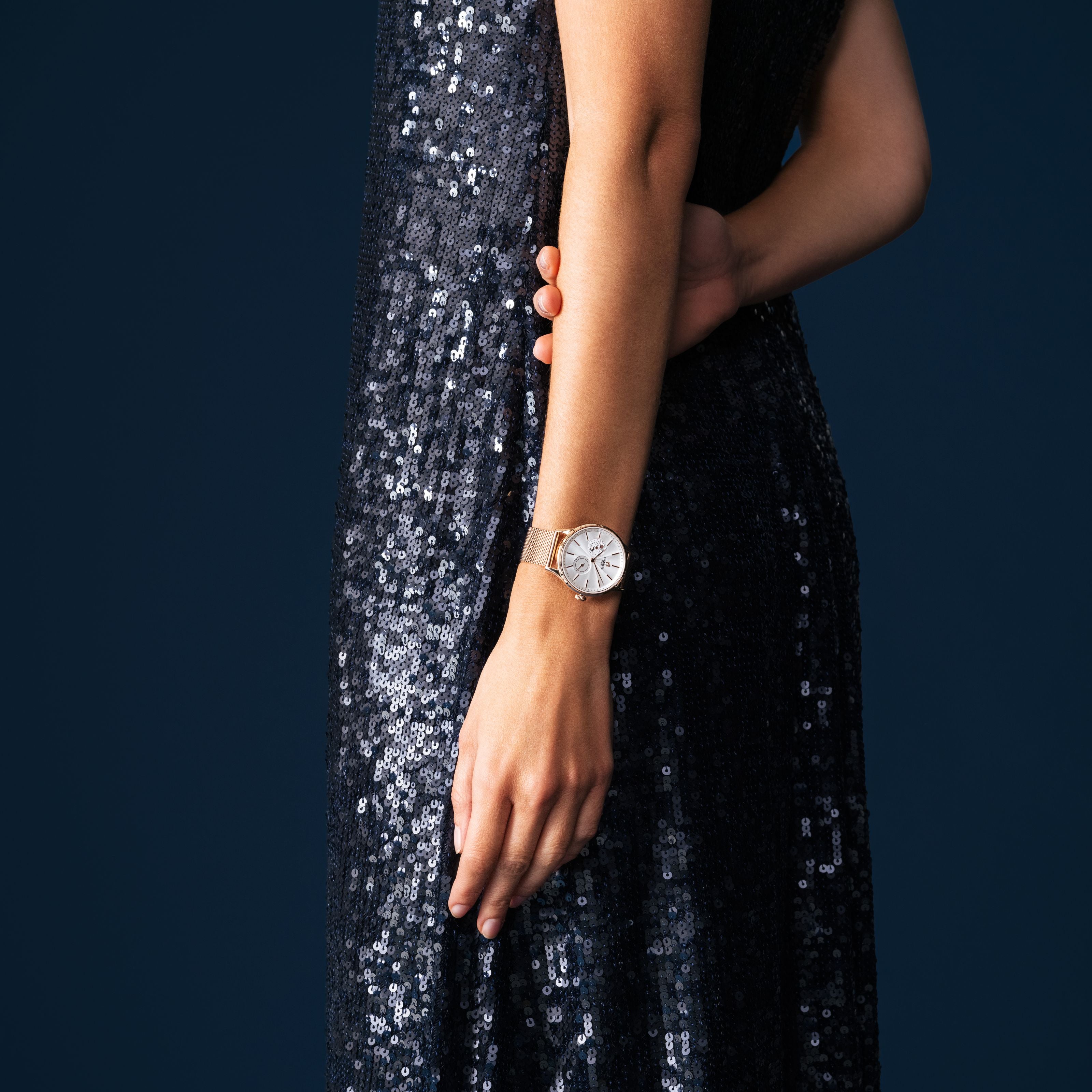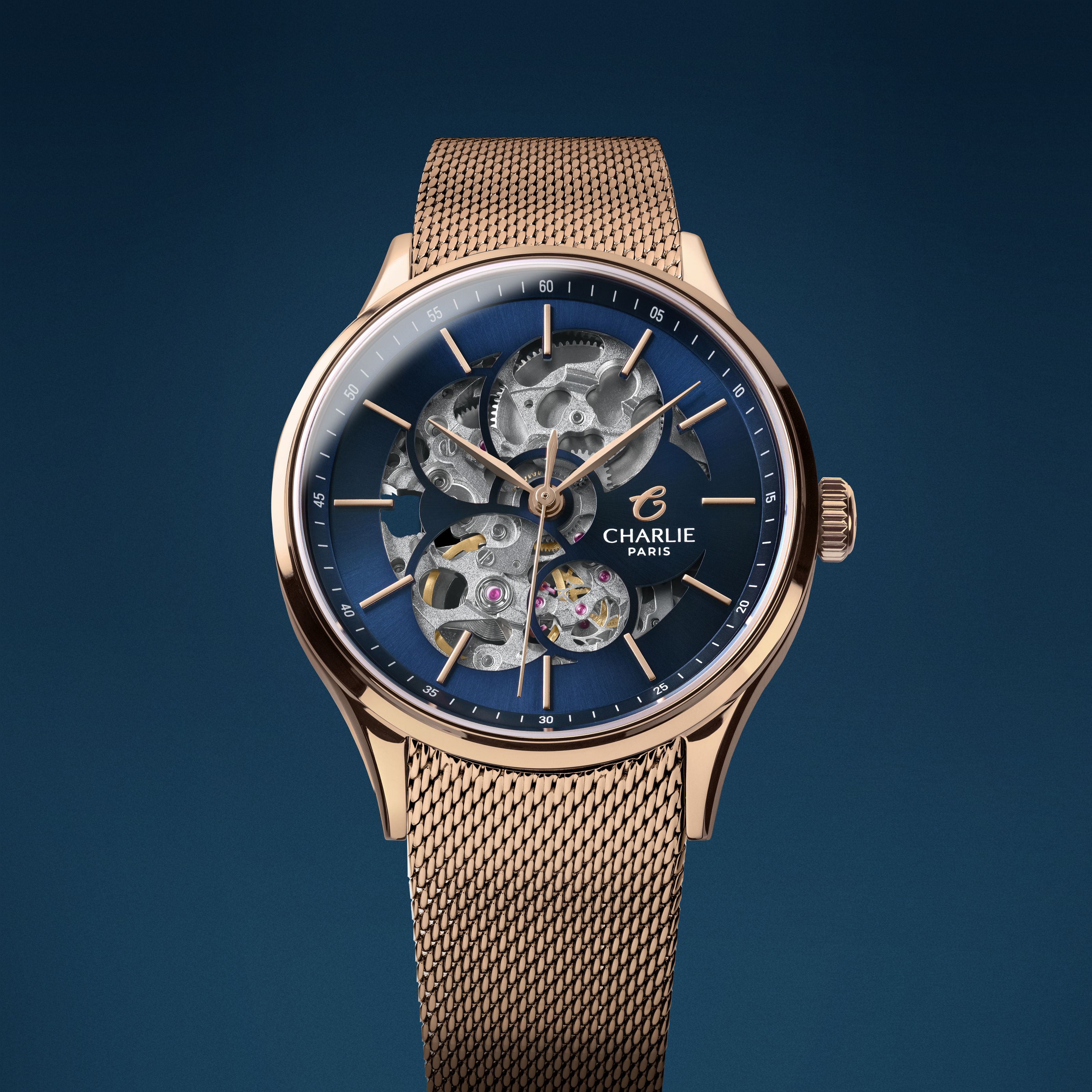In this article, our team will answer the following questions:
- What is a moon phase watch?
- What is the difference between a moon phase and a day/night complication?
- What should we know about the history of this complication in watchmaking?
- How do you read a dual hemisphere moon phase watch like our Moon Phase Alliance?
- What is the difference between a classic moon phase and a perpetual moon phase?
- How to adjust the moon phase of your Charlie Paris watch?
- What is a moon phase watch?
A watch with a moon phase complication is a watch that displays the lunar cycle. This complication is usually represented by a small disk or window on the watch face, which will show the visible part of the Moon in the night sky.
As a reminder, the moon phase represents the visible part of the Moon, which varies according to the position of the Moon in relation to the Sun and the Earth. There are different phases, ranging from New Moon (when the Moon is completely in shadow) to Full Moon (when the Moon is completely illuminated). The moon phase can be used to determine planting dates, fishing and hunting activities, and has also been used for lunar calendars in many cultures throughout history.
- What is the difference between a moon phase and day/night complication?
A moon phase watch will indicate the different lunar phases and a day/night watch will simply tell you if it is the day thanks to the sun, or the night thanks to the moon displayed on the dial.
Apart from its aesthetic aspect, the day/night complication will allow you to set your watch as well as possible by ensuring that the time displayed corresponds to night/morning (between midnight and noon) or afternoon/evening ( between noon and midnight).
- What should we know about the history of this complication in watchmaking?
The moon phase complication is actually the oldest feature to have been used in watchmaking. This feature dates back to ancient Greece and the Antikythera machine, which featured an accurate representation of the cosmos, including the moon phase.
Over the years, the moon phase complication has become a popular feature of luxury watches. For example, in 1925 we can see the appearance of this complication on a classic watch, with the presentation of the Patek Philippe Perpetual Calendar 97975 watch.
- How do you read a dual hemisphere moon phase watch like our Moon Phase Alliance?
A double hemisphere moon phase watch has an openworked disc in two places which allows you to view the moon according to your position (northern or southern hemisphere).
For information, on the Moon Phase Alliance , the northern hemisphere is at the bottom and the southern hemisphere is at the top. This may seem counter-intuitive but this is due to the direction of rotation of the disc of the C105 movement.
- What is the difference between a classic moon phase and a perpetual moon phase?
Unlike conventional moon phase movements which require manual adjustment of the moon every 2 years and 235 days, a perpetual moon phase will only require manual adjustment after 122 years and 51 days, as long as the watch is running.
- How to adjust the moon phase of your Charlie Paris watch?
Step 1 : Set the time of your watch.
Step 2 : Refer to the moon phase calendar below to find out the date of the last new or full moon.

Step 3 : Depending on the nearest date, whether it is a full moon or a new moon, take the tool provided with the watch and press the number of times necessary on the corrector (located at 8 o'clock on the case) to make a full moon or a new moon appear on the moon dial.
Step 4 : Then, depending on today's date, refer to the nearest last full moon or new moon and calculate the number of days difference.
Step 5 : Use the tool provided to adjust the moon phase and press the corrector as many times as necessary.
If all this still seems vague to you, here is a concrete example:
Let's say today is March 16, 2023.
First I set my watch.
After checking on a lunar calendar, I know the nearest last full moon was March 7, 2023.
So I take my tool and press the number of times necessary on the corrector, located at 8 o'clock on the case of my watch, to make a complete moon appear on my dial.

I then calculate the number of days between 7 (full moon date) and 16 (current date), i.e. 9 days apart.
I take my tool again and press the corrector 9 times this time.

Lo and behold, the moon phase is set for 122 years and 51 days (if the watch has not stopped in the meantime)!
Read more
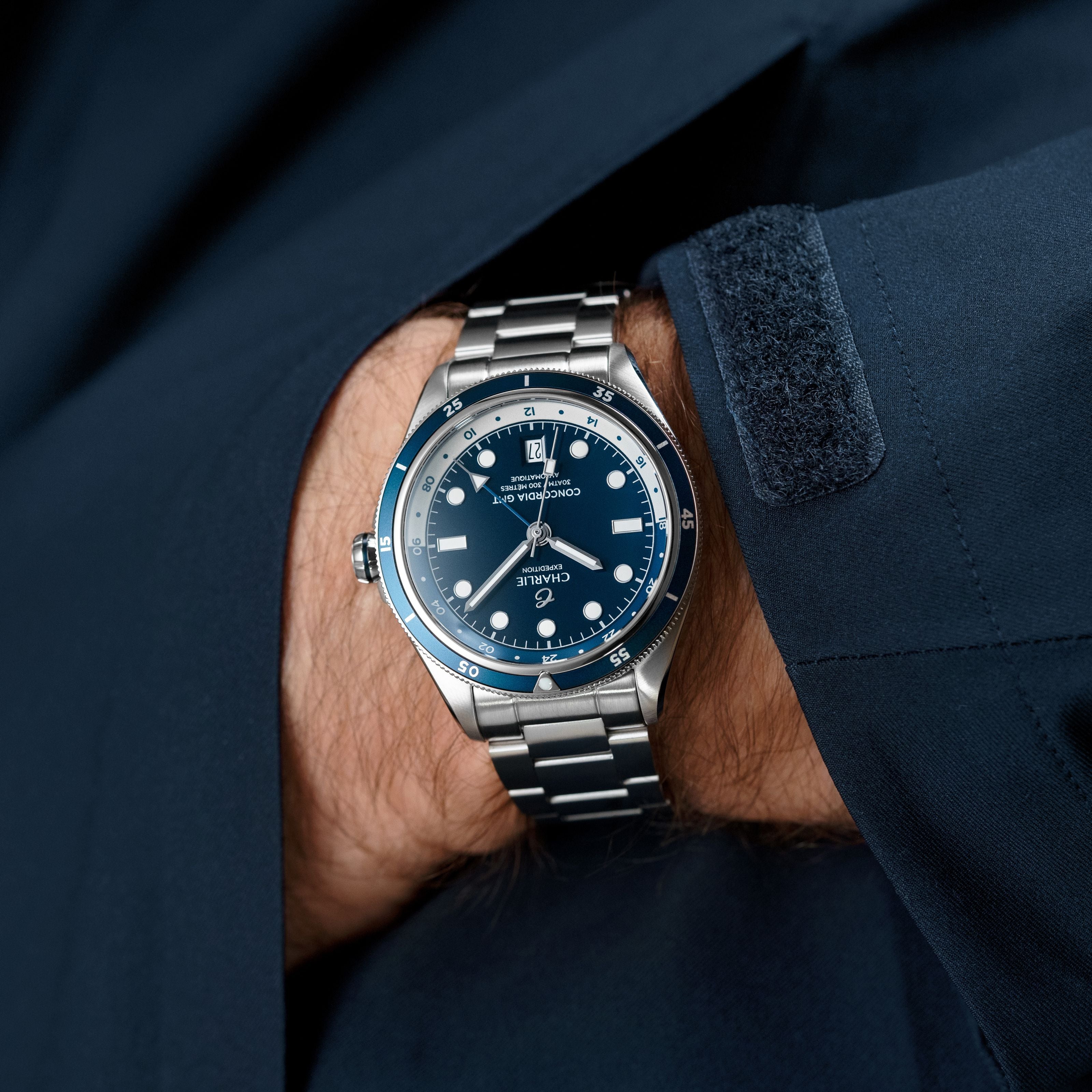
From Breguet to Cartier, including Hermès and Charlie Paris, French watchmaking combines heritage, innovation, and elegance. From grand historic houses to young, committed brands, it embodies a vi...

Some of you may want to take the challenge and change the battery of your watch on your own!


